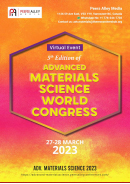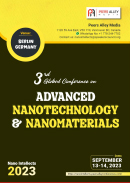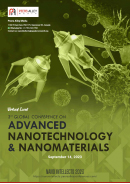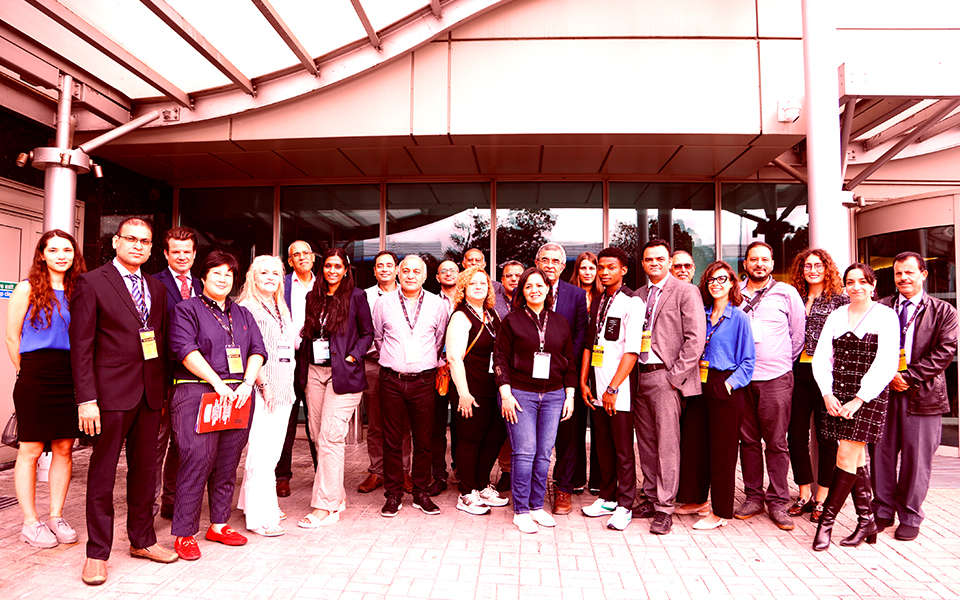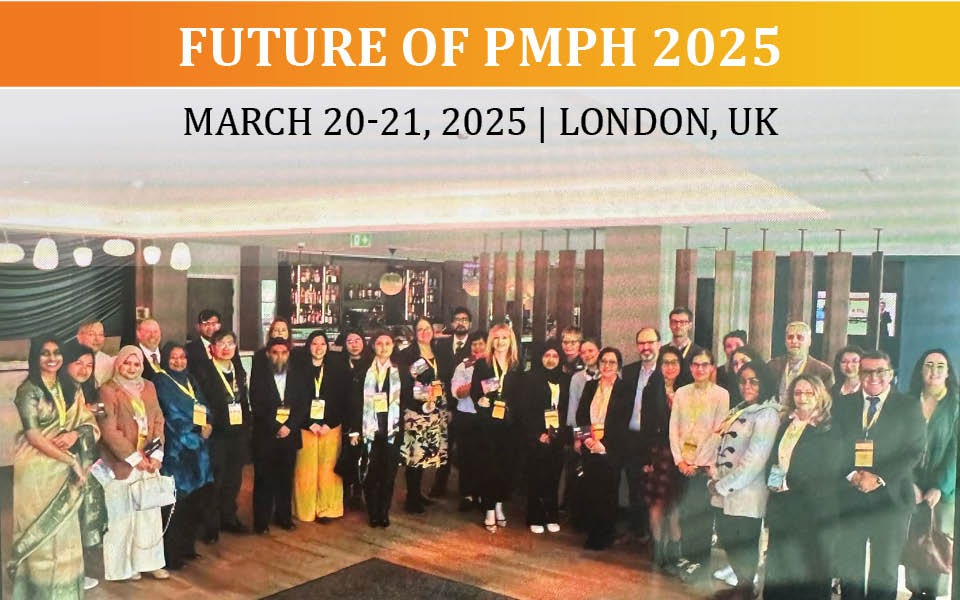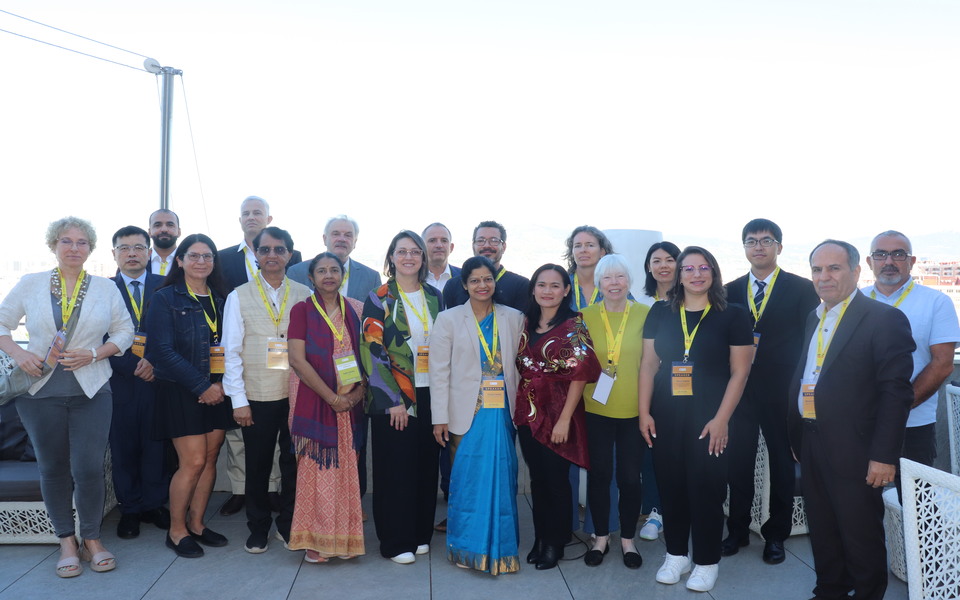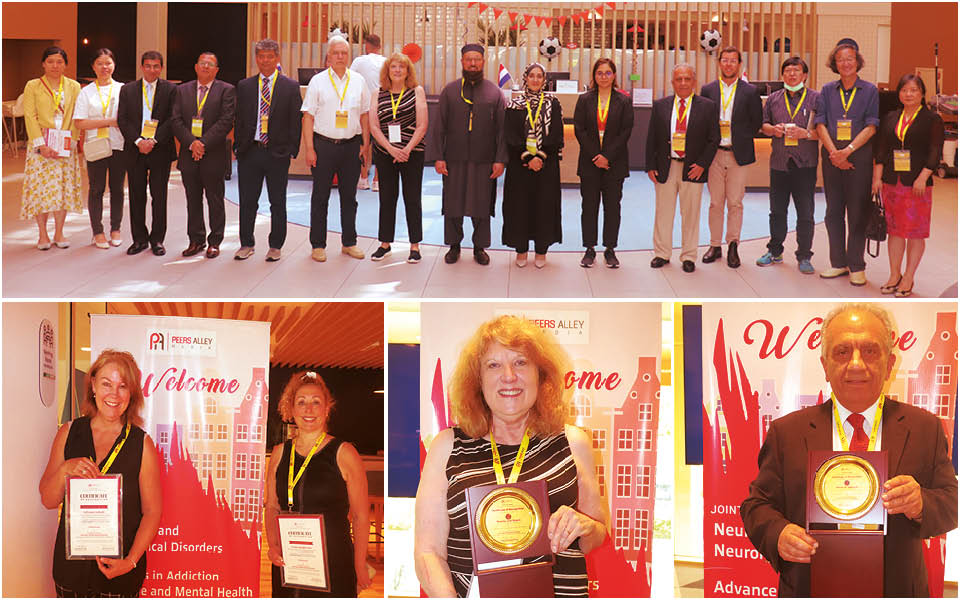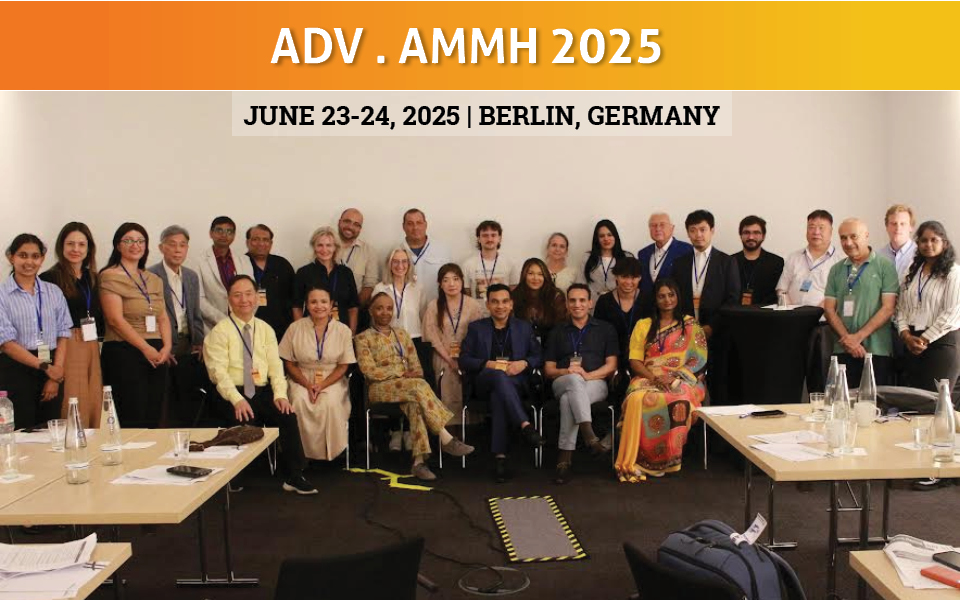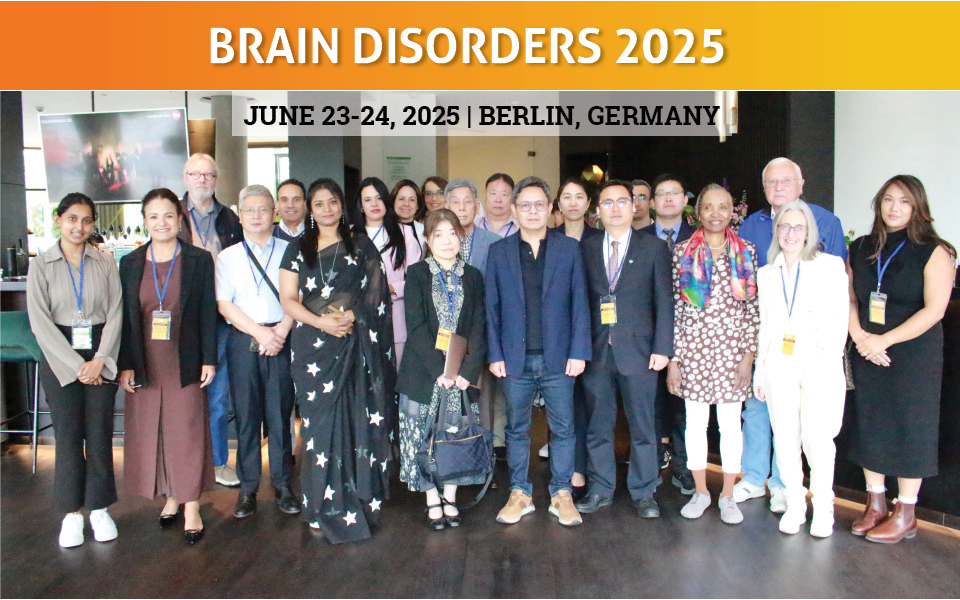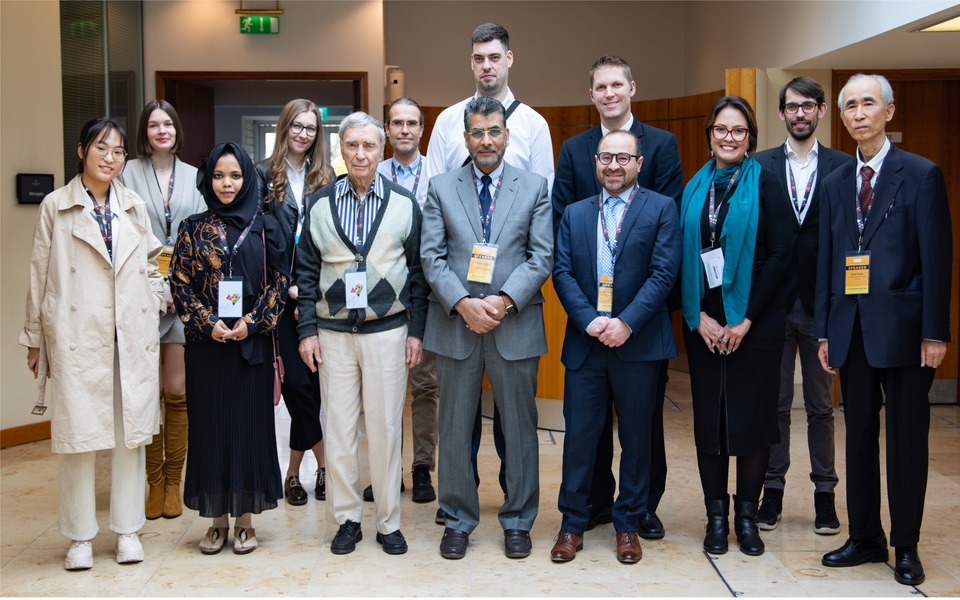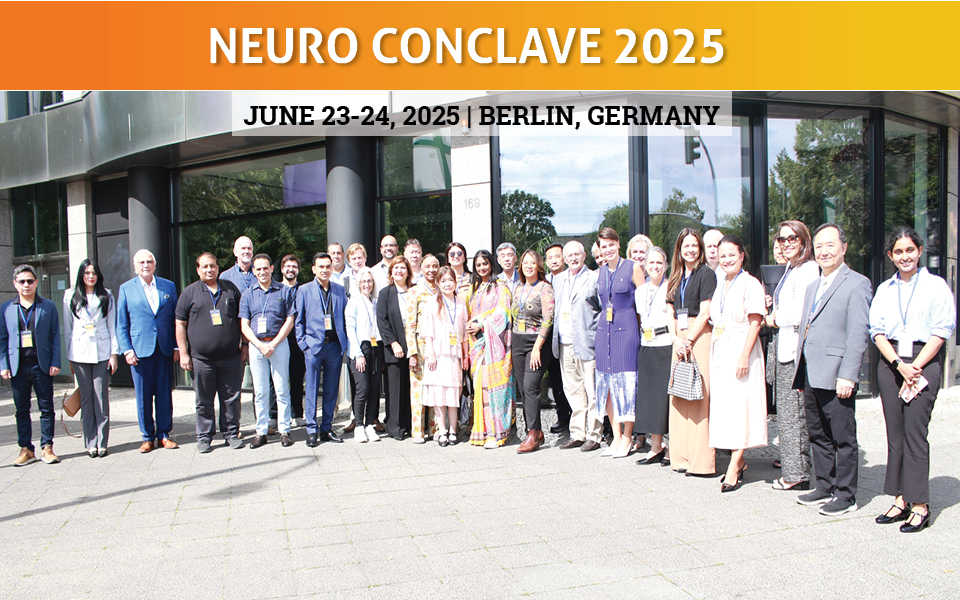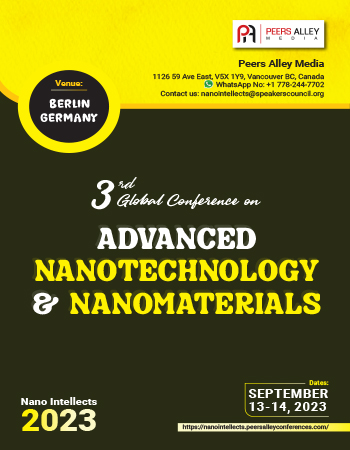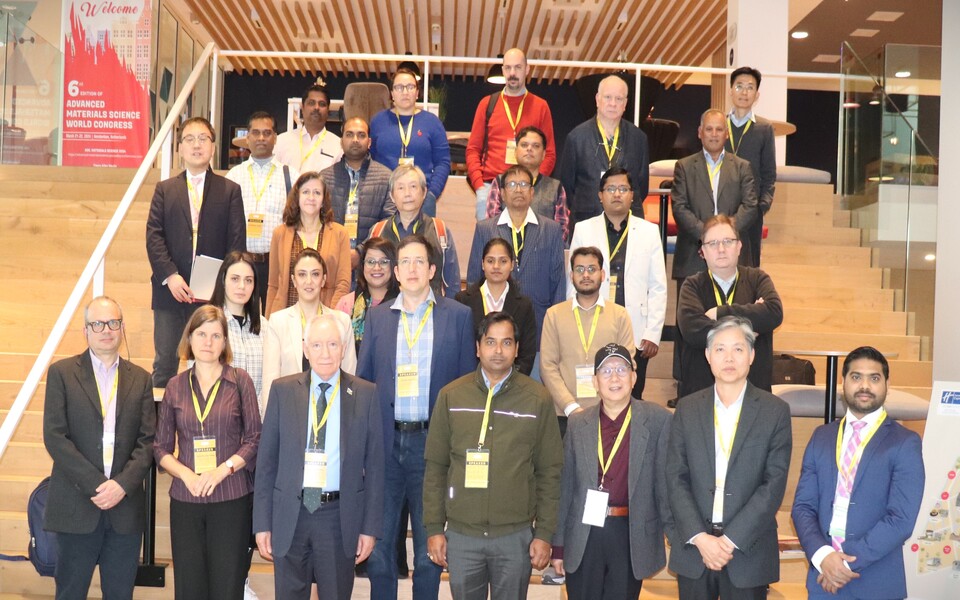
Smart Materials 2024
Peers Alley Media,Canada

Primary goal of attending an international conference is to present a paper to the experts and influencers. It gives you a platform to exchange your interest-related thoughts, paving the way for possible future collaborations.

Use this platform to build connections with an elite group of wise men and women to enhance your intellect. Young entrepreneurs, this is a great platform to connect with your peers.

Knowledge is Power. Knowledge teaches skills. Skills define excellence. Use this platform to become cognizant of your interest area to achieve excellence in your domain.

Attending a conference give you opportunity to get your abstract or paper published in conference proceedings

Meet and greet a myriad of industry professionals and academia experts with common interest. Every meal will be an opportunity to meet and interact with fellow researchers, attendees and experts.

Expand your professional competency and learn useful tips and tricks of your industry in our skill-building workshops.

Explore insights on recent advancements, new equipment, new techniques, and unpublished data, learn from thought-leaders and get to network with a great line up of speakers.

Our exhibits floor offers the attendees with a dynamic display of the latest products with cutting-edge technology.

Investing in you is the best investment. Peers Alley conferences give the patrons with a feeling of the serendipity of real learning, skill development in strategic workshops, networking and start-up opportunities, thus, is value for money.

Attending the conference gives you much needed break from your regular duties. It also allows you to explore new cities, culture and meet new people. You will feel energized and rejuvenated to return to the university and continue with the job after attending the conference.
Conferences are vital forum for academic researchers and business leaders. "It involves multiple presentations, interactive breakout sessions, hands-on product demonstrations and unrivalled networking opportunities".
We have invited some of the world's most sought-after keynote speakers, experts, brand ambassadors, and industry leaders to share their thoughts and ideas with our conference guests.
Register Now
The World Congress on Advanced 3D Printing and Additive Manufacturing Innovations aims to contribute to the growth and strengthening of the global 3D printing market, which has been experiencing significant expansion. As of 2023, the market size for 3D printing was valued at USD 20.37 billion, reflecting the increasing adoption of additive manufacturing technologies across various industries.
With a projected compound annual growth rate (CAGR) of 23.5% from 2024 to 2030, the market is poised for substantial expansion. This growth is attributed to aggressive research and development efforts in three-dimensional printing and the rising demand for prototyping applications across diverse industry verticals, including healthcare, automotive, aerospace, and defense.
The congress endeavors to leverage this momentum by addressing key objectives to further fortify the 3D printing market:
----------------------------------------------------
3D Printing and Additive Manufacturing Innovations 
about Adv. 3D Print Tech 2026 conference
Dear Colleagues and Friends,
Welcome to the World Congress on Advanced 3D Printing and Additive Manufacturing Innovations, taking place on June 18-19, 2026, in London, UK.
We are delighted to extend our warmest greetings to all participants, researchers, innovators, and enthusiasts joining us for this prestigious event. As we convene to explore the latest advancements in 3D printing and additive manufacturing, we embark on a journey of discovery, collaboration, and innovation that promises to shape the future of manufacturing and technology.
Over the course of two days, we will delve into groundbreaking research, revolutionary technologies, and transformative applications that are redefining the possibilities of 3D printing and additive manufacturing across industries. From aerospace and automotive to healthcare and beyond, the impact of these innovations knows no bounds.
We extend our heartfelt gratitude to all participants for your dedication, passion, and commitment to advancing the frontiers of 3D printing and additive manufacturing. Your contributions are invaluable, and we are honored to have you with us on this extraordinary journey.
See you there!
Sincerely yours,
Adv. 3D Print Tech 2026
Organizing Committee
Peers Alley Media, 1126 59 Ave East, V5X 1Y9, Vancouver BC, Canada

University of Notre Dame, USA

Safran Tech, France

HAMADA Clinic for Gastroenterology and Hepatology, Japan

Polytechnic University of Milan, Italy

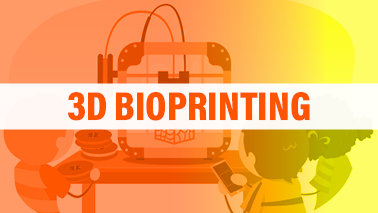
3D bioprinting is a groundbreaking technology that uses layer-by-layer deposition of living cells, biomaterials, and bioactive chemicals to build tissue-like structures that resemble natural tissues and organs. This technology has the potential to revolutionize areas such as regenerative medicine, drug discovery, and tissue engineering.
Significant advances in 3D bioprinting have occurred, including:
Multi-material printing: allows for the fabrication of complex structures made up of many materials, imitating the heterogeneity found in natural tissues.
Vascularization: It is the process of developing strategies for creating complicated networks of blood vessels within printed tissues, which are necessary for their survival and function.
Cell sourcing: Advancements in cell isolation and expansion technologies, such as the use of induced pluripotent stem cells (iPSCs) obtained from a patient's own cells, have reduced the chance of rejection.
Bioinks: Advancements in bioink development, including the use of natural polymers, synthetic materials, and hybrid compositions to improve cell viability, structural integrity, and usefulness.
Organ printing: The process of printing whole organs or organoids, such as hearts, kidneys, and livers, for transplantation, disease modeling, and drug testing.
High-throughput screening: involves using 3D bioprinting for speedy and cost-effective drug screening, allowing medications to be tested on more physiologically appropriate models.
Bioprinted skin: It is commercially available and can be used in cosmetics, pharmaceutical testing, and as burn grafts.
These discoveries point to a potential future for 3D bioprinting in personalized medicine, regenerative therapeutics, and disease modeling, however problems like as vascularization, immunological response, and scalability must to be addressed.
Tags
Additive Manufacturing Conferences Europe
Additive Manufacturing Conferences
3D Printing Conferences Asia
3D Printing Conferences 2026 Europe
Additive Manufacturing Conferences Japan
3D Printing Conferences Singapore
3D Printing Conferences 2026
3D Printing Conferences
3D Printing Conferences Japan
Additive Manufacturing Conferences USA
3D Printing Conferences 2026 USA

3D food printing is a cutting-edge technique that creates edible products utilizing edible elements as "inks." Here are some breakthroughs and trends in the field:
Materials Innovation: Researchers are continually looking for novel materials that are suited for 3D food printing, such as edible gels, pastes, and powder. These materials must be food-safe, with the appropriate texture, flavor, and nutritional value. Some industries are exploring with alternate protein sources such as insect-based flours and plant-based proteins.
Customization: One of the most notable benefits of 3D food printing is the ability to tailor food to specific tastes and dietary requirements. Companies are creating software and technology solutions that allow customers to customize food items by modifying aspects such as shape, texture, flavor, and nutritional content.
Nutritional Enhancement: 3D food printing technology allows for exact control over the composition of food products, including the insertion of critical nutrients, vitamins, and supplements. This offers up the possibility of individualized diet based on specific health requirements.
Complex Structures: Advances in 3D printing techniques allow for the construction of more complex food structures that were previously unachievable using traditional methods. This includes elaborate designs, patterns, and textures, which improve the visual appeal and mouthfeel of printed foods.
On-demand Food manufacture: 3D food printers have the potential to transform the food business by allowing for the on-demand manufacture of fresh and personalized food products. This can lead to less food waste because ingredients can be properly measured and used only as needed.
Culinary Applications: Chefs and food aficionados are investigating the creative potential of 3D food printing in culinary arts. From creative food presentations to innovative taste experiences, chefs are using 3D printing to push the boundaries of gastronomy.
Sustainability: 3D food printing has the potential to improve food production by employing alternative ingredients, minimizing food waste, and maximizing resource utilization. Some companies are experimenting with using food waste or byproducts as raw materials for 3D printing, which will help to create a more circular food system.
Regulatory Challenges: As with any new technology in the food industry, there are regulatory issues to overcome with food safety, labeling, and certification. Regulators are developing guidelines and standards to ensure the safety and quality of 3D printed foods for customers.
Overall, 3D food printing has the potential to alter the way we manufacture, consume, and experience food, with continued developments driving its adoption across various sectors of the food business.
Tags
3D Modeling Conferences
3D Printing Conferences Europe
Additive Manufacturing Conferences Europe
Computer-Aided Design Conferences
Additive Manufacturing Conferences
3D Printing Conferences China
3D Printing Conferences
3D Printing Conferences 2026 Europe
Additive Manufacturing Conferences 2026
3D Printing Conferences Middle East
Additive Manufacturing Conferences USA
Additive Manufacturing Conferences Asia
3D Printing Conferences Japan
Additive Manufacturing Conferences Japan
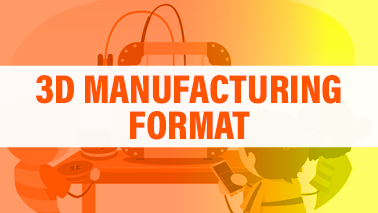
3D Manufacturing Format (3MF) is a file format created by the 3MF Consortium to solve the current constraints of file formats such as STL (STereoLithography), which are widely used in 3D printing. 3MF promises to be a more versatile and capable format for describing 3D models, including detailed information about a 3D object's geometry, materials, colors, and other features.
Some important improvements and features of 3MF are:
Full-color printing capabilities: Unlike STL, which only supports single-color models, 3MF can hold information about many colors per model, enabling full-color 3D printing.
Texture mapping: 3MF supports texture mapping, which allows for the addition of detailed surface textures to 3D models, improving their visual look.
Materials and properties: The format enables the specification of materials and their properties, such as density, temperature resistance, and so on, resulting in more accurate representation and printing of complicated structures.
Support structures: 3MF allows you to include support structures in your model file, which makes it easier to print complex geometries that require them.
Extensibility: The format is intended to be easily extensible, allowing for the future inclusion of new features and capabilities without interfering with existing software and hardware compatibility.
Improved compression: 3MF files are often smaller than identical STL files due to more efficient compression algorithms, which reduce storage and transfer times.
Security features: 3MF contains options for securing and encrypting file contents, protecting intellectual property, and maintaining data integrity.
Overall, 3MF marks a substantial breakthrough in 3D printing file formats, providing a more comprehensive and versatile approach for describing 3D models while also meeting the evolving needs of the industry.
Tags
Additive Manufacturing Conferences USA
3D Printing Conferences 2026 Europe
3D Printing Conferences
3D Printing Conferences Asia
Additive Manufacturing Conferences
3D Printing Conferences Europe
3D Printing Conferences Singapore
Additive Manufacturing Conferences Asia
3D Printing Conferences 2026 USA
Additive Manufacturing Conferences Japan
3D Modeling Conferences
3D Printing Conferences Japan
Additive Manufacturing Conferences 2026
3D Printing Conferences Middle East
3D printing, also known as additive manufacturing, has made major advances over the years, transforming industries such as manufacturing, healthcare, aerospace, and automotive. Here are some key advancements:
Material diversity: Initially, 3D printing was restricted to plastics. However, developments have resulted in the production of a diverse range of materials, including metals, ceramics, composites, and even biological materials such as living cells, for bioprinting.
Improved printing technologies: Printing methods including Stereolithography (SLA), Selective Laser Sintering (SLS), Fused Deposition Modeling (FDM), and Digital Light Processing (DLP) have advanced significantly. These technologies allow for faster printing speeds, higher resolution, and superior surface finishes.
Large-Scale Printing: Initially, 3D printers were limited in terms of the scale of the items they could create. However, developments have resulted in the creation of large-scale 3D printers capable of producing entire buildings, bridges, and other infrastructure elements.
Multi-Material Printing: Modern 3D printers can often print various materials at the same time, allowing the fabrication of complex, multi-component things in a single print session. This feature provides us new opportunities for developing functioning prototypes and end-use parts with a variety of attributes.
Desktop 3D Printing: While industrial-grade 3D printers remain common in large-scale manufacturing, desktop 3D printers are becoming more affordable to consumers and small enterprises. These printers are inexpensive and simple to operate, making 3D printing available to a larger audience.
Bioprinting: One of the most fascinating breakthroughs is the field of bioprinting, which involves the use of living cells and biomaterials to construct tissues and even organs. While still in the experimental stage, bioprinting has the potential to revolutionize regenerative medicine and organ transplantation.
Digital Design and Simulation: Advances in software tools for 3D modeling, simulation, and optimization have made it easier to create complicated items for 3D printing. Digital design workflows enable for quick iteration and optimization, decreasing time and cost in the product development cycle.
Industry 4.0 Integration: 3D printing is increasingly being used in Industry 4.0 projects, where it helps to enable on-demand manufacturing, mass customisation, and decentralized production. This integration makes use of digital twin technologies, IoT sensors, and data analytics to optimize the entire production workflow.
Overall, 3D printing is fast evolving, expanding the bounds of what is feasible in manufacturing, medicine, and other fields. As technology evolves and becomes more widely available, we should expect even more interesting advances in the years ahead.
Tags
3D Printing Conferences Middle East
3D Printing Conferences China
3D Modeling Conferences
Material Extrusion Conferences
3D Printing Conferences
Additive Manufacturing Conferences 2026
Additive Manufacturing Conferences Asia
3D Printing Conferences Singapore
3D Printing Conferences 2026 USA
3D Printing Conferences Asia
Computer-Aided Design Conferences
Additive Manufacturing Conferences USA
3D Printing Conferences Japan

3D printing technology has transformed cultural heritage preservation by providing novel approaches to documenting, restoring, and sharing historical artifacts and settings. It permits the development of highly accurate physical reproductions, conservation assistance, and immersive experiences for researchers, educators, and the general public.
Advances in 3D printing have substantially improved its uses in cultural heritage protection.
High-resolution scanning: Improved scanning technologies, such as laser scanning and photogrammetry, can capture precise features of artifacts and places, resulting in more realistic 3D models.
Materials Diversity: The availability of a wide range of materials, including metals, ceramics, and polymers, allows for the construction of replicas that closely mimic the original objects in feel and appearance.
Color replication: Advancements in color 3D printing enable the replication of artifacts' original hues and patterns, increasing the realism of the replicas.
Size Scalability: Because 3D printing can create copies of varying sizes, ranging from miniature models to full-scale reconstructions, it is appropriate for a variety of preservation and exhibition purposes.
Accessibility and Education: 3D printing allows scholars, students, and the general public to study and interact with historical objects that may be fragile or located far away.
Restoration and Conservation: 3D printing helps restore and conserve antiquities by creating missing or damaged components, avoiding the need for invasive procedures on the original objects.
Virtual Reconstruction: When combined with virtual reality (VR) and augmented reality (AR), 3D printing may create immersive experiences that allow users to explore rebuilt historical sites and artifacts in a virtual environment.
Customization and Experimentation: 3D printing allows researchers and artists to make personalized tools, molds, and experimental reconstructions, furthering the study and understanding of cultural heritage.
While 3D printing has significant advantages for cultural heritage preservation, issues such as cost, competence, and ethical concerns remain. However, as technology advances and researchers, conservators, and 3D printing experts collaborate more, the possibilities for preserving and experiencing our cultural past grow.
Tags
3D Printing Conferences Japan
3D Printing Conferences Europe
Additive Manufacturing Conferences 2026
Material Extrusion Conferences
Additive Manufacturing Conferences
Additive Manufacturing Conferences Europe
Additive Manufacturing Conferences Asia
3D Printing Conferences China
3D Printing Conferences 2026 Europe
3D Modeling Conferences
3D Printing Conferences Singapore
3D Printing Conferences 2026 USA
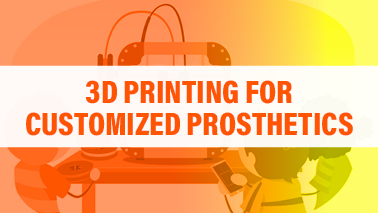
3D printing has transformed the area of prosthetics, allowing for the development of customized, inexpensive, and practical prosthetic devices. Here are some significant developments and benefits of 3D printing in this field:
Customization: With 3D printing, prosthetics may be personalized to an individual's specific anatomy and functional requirements. Compared to typical prosthetics, this customisation improves comfort, fit, and function.
Cost-effectiveness: Traditional prosthetics can be costly, particularly when personalized. 3D printing dramatically saves costs by maximizing material utilization and streamlining the manufacturing process.
Rapid Prototyping: 3D printing allows designers and physicians to swiftly iterate on designs and make changes depending on patient feedback. This leads to faster development and more responsive care.
Complicated Geometries: 3D printing allows for the creation of prosthetic components with complicated geometries that are difficult or impossible to manufacture using traditional manufacturing processes. This makes for more natural and functional designs.
Improved Functionality: Advances in materials and printing techniques have resulted in prosthetic devices that are more functional, durable, and beautiful. Individual finger movement and grip patterns can now be included in 3D-printed prosthetic hands.
Accessibility: 3D printing has the potential to make prosthetics more accessible to persons living in developing nations or isolated places where traditional prosthetic services may be scarce or unavailable.
Patient Involvement: 3D printing allows patients to have a greater say in the design and modification of their prosthetics, resulting in higher satisfaction and a sense of ownership over their equipment.
Overall, 3D printing has altered the field of prosthetics by making customized, functioning devices more accessible and inexpensive, as well as allowing for speedier innovation and patient-centered care.
Tags
3D Printing Conferences China
Additive Manufacturing Conferences
3D Printing Conferences Asia
Material Extrusion Conferences
Additive Manufacturing Conferences Europe
Additive Manufacturing Conferences Japan
3D Printing Conferences Europe
3D Printing Conferences 2026
Additive Manufacturing Conferences USA
3D Printing Conferences Japan
3D Printing Conferences 2026 USA
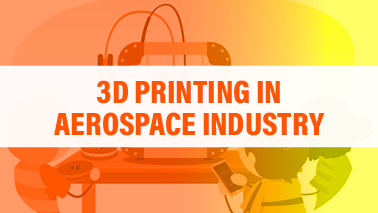
3D printing has made tremendous advances in the aerospace industry. Here are some significant areas where 3D printing is used and how it is evolving:
Complex and lightweight structures: 3D printing enables the construction of complex geometries that would be difficult or impossible to create using traditional manufacturing processes. These complicated structures can be optimized for strength and weight, resulting in lighter, more fuel-efficient airplanes.
Reduced Lead Times: 3D printing has the potential to dramatically cut lead times for producing items. This is especially advantageous in the aerospace industry, where spare parts for aging planes can be difficult to find.
Cost Reduction: While 3D printing can have significant initial setup costs, the technology can eventually cut costs by eliminating the need for expensive tooling and minimizing material waste.
Customisation: 3D printing allows for part customisation depending on specific requirements, which is especially important in the aerospace industry, where parts may need to be adapted to meet unique design standards.
Materials Innovation: The aerospace industry is always looking for novel materials with better attributes including strength-to-weight ratio, heat resistance, and chemical resistance. 3D printing enables the use of sophisticated materials that are difficult to prepare using conventional methods.
On-Demand Manufacturing: 3D printing enables on-demand manufacturing, which means that parts may be manufactured as needed, lowering inventory costs and storage needs.
Repair and Maintenance: In the aircraft industry, 3D printing is also used for repairs and maintenance. Instead of replacing entire components, 3D printing can be utilized to create specialized parts that extend the life of existing ones.
Overall, 3D printing is transforming the aerospace sector by opening up new opportunities for design, manufacture, and maintenance, resulting in more efficient and cost-effective aircraft.
Tags
Computer-Aided Design Conferences
3D Printing Conferences
Additive Manufacturing Conferences Europe
3D Modeling Conferences
3D Printing Conferences 2026 Europe
Additive Manufacturing Conferences Asia
3D Printing Conferences 2026 USA
3D Printing Conferences Singapore
3D Printing Conferences Asia
3D Printing Conferences Europe
3D Printing Conferences 2026
3D Printing Conferences Middle East

3D printing has transformed architecture and construction by providing creative options for design, prototyping, and even building. Here are some significant advancements and applications in this sector.
Prototyping and Design Iterations 3D printing allows architects and designers to swiftly and correctly construct elaborate models and prototypes of their concepts. This enables for fast iteration and improvement of concepts before proceeding with full-scale fabrication.
Customization and personalization: 3D printing allows for the fabrication of highly personalized architectural parts and components that are tailored to individual project needs. This level of flexibility enables one-of-a-kind designs that would be difficult or impossible to create using standard construction methods.
Complex Geometries: Traditional construction processes frequently struggle with complex geometries, whereas 3D printing excels at producing intricate shapes and structures with ease. This capacity gives architects additional opportunities to experiment with organic forms and unorthodox designs.
Speed and Efficiency: While traditional construction processes can be time-consuming, 3D printing provides a faster alternative, particularly when generating building components. This speed has the potential to dramatically cut building time and expense.
Sustainability: 3D printing can reduce material waste by just using the material required for construction. Furthermore, some 3D printing technologies make use of environmentally benign materials, which improves construction sustainability.
On-Site Construction: Mobile 3D printers can be put immediately on construction sites, allowing for on-demand production of building components. This capacity eliminates the need to transfer prefabricated parts and can speed up the construction process.
Large-scale Printing: Advancements in 3D printing technology have enabled the creation of large-scale constructions such as complete houses or bridges. These examples demonstrate 3D printing's scalability in construction and its potential to change the way we build infrastructure.
Material Innovation: Researchers are constantly creating new materials appropriate for 3D printing in building, such as concrete, ceramics, and even bio-based materials. These materials have improved qualities such as strength, durability, and thermal efficiency, broadening the applications for 3D printed structures.
Integration with Other Technologies: 3D printing is frequently coupled with other technologies such as robotics, augmented reality (AR), and artificial intelligence (AI) to expand its possibilities. For example, robotic arms can be used to automate the printing process, and augmented reality can help architects visualize ideas in real-world settings.
Overall, 3D printing in architecture and construction is fast evolving, providing architects, designers, and engineers with new tools and chances to push the boundaries of building design and construction.
Tags
Additive Manufacturing Conferences Europe
Additive Manufacturing Conferences USA
3D Printing Conferences 2026 USA
3D Printing Conferences Europe
3D Printing Conferences Asia
3D Printing Conferences
Additive Manufacturing Conferences
3D Printing Conferences 2026
Additive Manufacturing Conferences Asia
3D Modeling Conferences
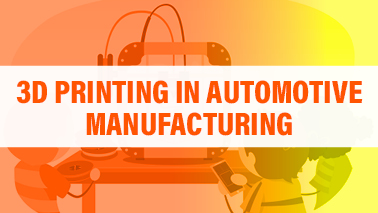
3D printing, also known as additive manufacturing, has made tremendous advances in the automotive sector, transforming how vehicles are designed, prototyped, and even manufactured. Here are several important aspects:
Prototyping: One of the first applications of 3D printing in vehicle manufacturing was quick prototyping. It enables engineers to swiftly generate physical models of parts and assemblies, resulting in faster design iteration and validation. This accelerates the development process and lowers the costs associated with traditional prototype methods.
Customisation: 3D printing allows for the customisation of items to meet unique specifications or individual preferences. This can include personalized interior components, one-of-a-kind exterior designs, or even custom functional pieces for improved performance. Companies such as BMW and Porsche have investigated the use of 3D printing for unique components in limited production runs or special editions of their cars.
Complex Geometries: Traditional manufacturing methods frequently have constraints when it comes to producing complex geometries. With 3D printing, complicated shapes and structures may be easily created, allowing for lightweighting, enhanced aerodynamics, and functional integration. This has an impact on both performance and aesthetics in car design.
Beyond direct item manufacture, 3D printing is used to create tooling, jigs, and fixtures for use in manufacturing. These aids can be quickly created, updated, and improved as needed, resulting in shorter lead times and lower costs than traditional machining or fabrication.
Spare parts and legacy components. As vehicles age, finding new parts for older models can be difficult and expensive. 3D printing provides a solution by allowing for on-demand creation of spare parts, which eliminates the need for extensive inventory storage and tool maintenance. This is especially beneficial for historic automobile lovers and restoration efforts.
Material Advancements: The number of materials compatible with 3D printing continues to grow, giving producers greater options in terms of strength, durability, heat resistance, and other features. High-performance polymers, metals, and composites are increasingly being used in automotive applications, presenting new opportunities for lightweighting and performance enhancement.
On-demand Production: While mass production is still primarily carried out using traditional manufacturing methods, 3D printing holds the possibility of bringing on-demand production closer to consumers. This might potentially simplify supply chains, save inventory costs, and allow for more localized manufacture, particularly for low-volume or niche car types.
Overall, 3D printing is transforming car manufacturing by increasing design flexibility, shortening iteration cycles, and opening up new opportunities for customisation and efficiency. As technology advances and becomes more accessible, its impact on the automotive sector is projected to expand even further.
Tags
Additive Manufacturing Conferences Asia
Computer-Aided Design Conferences
3D Printing Conferences 2026 USA
3D Printing Conferences China
3D Printing Conferences 2026
Additive Manufacturing Conferences Europe
3D Printing Conferences Middle East
3D Printing Conferences Singapore
Material Extrusion Conferences
Additive Manufacturing Conferences
3D Printing Conferences Europe
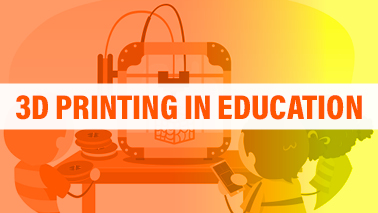
3D printing has become an invaluable tool in education, transforming how pupils learn and teachers educate. Here are some developments and advantages of 3D printing in education:
Hands-on Learning: With 3D printing, students may make physical objects from their computer creations. This hands-on experience improves comprehension of complicated concepts in subjects such as math, engineering, and science.
3D printing promotes multidisciplinary learning: By merging design, engineering, and creativity. Students can use principles from a variety of areas to develop novel solutions to real-world situations.
Visual and tactile learning: improve understanding and recall. 3D printing enables students to touch and engage with physical models, making abstract concepts more tangible and intelligible.
Customization and personalization: Teachers can adapt instructional materials to meet the needs of individual students. They can design bespoke models, diagrams, and prototypes to demonstrate certain concepts or suit different learning styles.
3D printing promotes creativity and innovation: By allowing students to transform their ideas into reality. Students can create and prototype innovations, investigate new designs, and experiment with various materials.
Problem-Solving Ability: Designing and printing products necessitates critical thinking and problem-solving skills. Students learn how to identify problems, create solutions, and iterate designs to reach desired results.
Career Readiness: 3D printing prepares students for professions in engineering, architecture, product design, and manufacturing. They acquire hands-on experience using industry-standard tools and technology, which improves their employability.
Accessible Learning Tools: 3D printers are becoming more affordable and accessible, allowing schools to include them into their curriculum. Open-source software and online resources make remote learning and collaboration possible.
STEM Education: 3D printing is an effective tool for encouraging STEM (science, technology, engineering, and mathematics) education. It helps pupils develop important STEM abilities and encourages an interest in these subjects from an early age.
Global Collaboration: With 3D printing, students may work with classmates and specialists from all around the world. They can share designs, collaborate on projects, and take part in competitions and challenges, broadening their horizons and promoting cultural interchange.
Overall, 3D printing in education is evolving, providing limitless opportunities for improving teaching and learning across multiple topics and grade levels. As technology progresses and becomes more accessible, its impact on education is predicted to multiply rapidly.
Tags
3D Printing Conferences Japan
Computer-Aided Design Conferences
3D Printing Conferences
3D Modeling Conferences
3D Printing Conferences Middle East
3D Printing Conferences Europe
3D Printing Conferences Asia
Additive Manufacturing Conferences USA
Additive Manufacturing Conferences 2026
3D Printing Conferences 2026 Europe
Additive Manufacturing Conferences
3D Printing Conferences China
3D Printing Conferences Singapore
Additive Manufacturing Conferences Japan
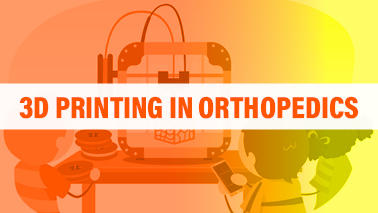
In the realm of orthopedics, 3D printing has transformed the production of unique implants, prosthetics, surgical guides, and anatomical models. Here are some important developments and applications:
Custom implants: Traditional implants are frequently available in standard sizes, which may not fit every patient properly. Implants can be custom-designed via 3D printing based on the patient's specific anatomy, increasing fit and lowering the risk of problems. These implants can be constructed of titanium or biocompatible polymers.
Patient-specific Surgical Guides: With 3D printing, doctors may create patient-specific surgical guides to help them place implants or conduct complex surgeries more accurately. These guides are created using the patient's medical imaging data, giving precise direction during surgery and saving operating time.
Complex Anatomical Models: Surgeons can employ 3D-printed anatomical models for pre-operative planning and training. These models correctly represent a patient's anatomy, allowing surgeons to visualize complex structures and rehearse treatments before conducting them on the real patient. This can lead to better surgical outcomes and lower risks.
Biodegradable Implants: Researchers are investigating the use of biodegradable materials in 3D-printed implants that will gradually disintegrate in the body as the patient's natural tissues recover and repair. These implants prevent the need for a second surgery to remove the implant, hence lowering patient discomfort and healthcare expenses.
Drug Delivery Systems: 3D printing technology allows for the creation of complex drug delivery systems, such as implants or scaffolds, that may be customized to release medication at particular rates or locations in the body. This method shows potential for treating illnesses such as osteomyelitis and bone malignancy.
Tissue Engineering and Regenerative Medicine: In addition to implants and prostheses, 3D printing is used to generate scaffolds for tissue engineering applications. These scaffolds provide a foundation for the regeneration of bone, cartilage, and other tissues, making them potentially useful for individuals suffering from severe injuries or degenerative disorders.
Rapid Prototyping: Orthopedic device producers can employ 3D printing to iterate and perfect designs before mass manufacturing. This speeds up the development process, allowing for more inventive and tailored medical devices.
Overall, 3D printing has proven to be an effective tool in orthopedics, providing individualized solutions, increased surgical precision, and new opportunities for tissue regeneration and drug delivery. As technology advances, it shows enormous promise for improving patient outcomes and altering the future of orthopedic care.
Tags
3D Modeling Conferences
3D Printing Conferences China
3D Printing Conferences 2026
Additive Manufacturing Conferences USA
3D Printing Conferences Middle East
3D Printing Conferences 2026 USA
3D Printing Conferences 2026 Europe
3D Printing Conferences Europe
Additive Manufacturing Conferences
Additive Manufacturing Conferences Europe
Material Extrusion Conferences
3D Printing Conferences
3D Printing Conferences Singapore
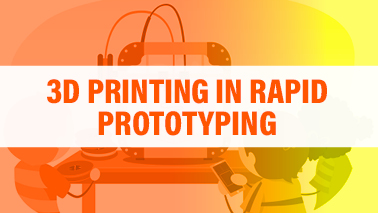
Rapid prototyping, particularly with 3D printing, has transformed product development across industries. Here's an outline of quick prototyping using 3D printing and some of its advancements:
Speed and cost-effectiveness: Traditional prototyping methods can need substantial time and money. 3D printing allows for faster and less expensive design iteration. This speed enables for faster iterations and refining.
Design Flexibility: 3D printing enables sophisticated patterns that are difficult or impossible to accomplish through traditional production methods. This design flexibility fosters product innovation and inventiveness.
Material Variety: Advances in 3D printing technology have increased the number of materials that can be utilized for prototyping. From plastics and metals to ceramics and even biological materials, there is an increasing selection of materials to meet the needs of varied prototypes.
Multi-material Printing: Some 3D printers can print with various materials at once. This functionality is especially beneficial for developing prototypes with varying mechanical qualities or incorporating components made of diverse materials.
Large-scale Printing: While traditional 3D printers have size limitations, advancements have resulted in the development of large-scale 3D printers capable of printing full-scale prototypes or even larger structures, such as architectural models or aerospace components.
High-Resolution Printing: Advances in printing technology have resulted in higher resolution and finer detail in printed prototypes. This is critical for prototypes requiring extreme precision, such as medical devices or delicate mechanical parts.
Integration With CAD Software: The prototyping process is streamlined thanks to the seamless integration of 3D printing with computer-aided design (CAD) software. Design changes can be swiftly transformed into printable files, shortening the time between concept and practical prototype.
Advances in Post-Processing Techniques: Surface finishing and painting are two post-processing techniques that have emerged to improve the appearance and usefulness of 3D-printed prototypes. These strategies aid with the transition between prototypes and finished products.
Bioprinting: Bioprinting is a cutting-edge 3D printing application in the field of medical and biotechnological prototypes. It entails layering biological materials to form living tissues, organs, or scaffolds for use in regenerative medicine and drug testing.
On-Demand production: As 3D printing technology advances, there is an increasing trend toward on-demand production. Companies may generate prototypes and even finished items as needed, lowering inventory costs and lead times.
These developments continue to push the frontiers of rapid prototyping, allowing for faster invention, shorter product development cycles, and, ultimately, better goods.
Tags
Additive Manufacturing Conferences
3D Printing Conferences Japan
Material Extrusion Conferences
Additive Manufacturing Conferences Japan
3D Printing Conferences 2026 USA
3D Printing Conferences Middle East
3D Printing Conferences
3D Printing Conferences 2026
3D Printing Conferences Singapore
Additive Manufacturing Conferences Europe
3D Printing Conferences China
3D Printing Conferences Europe
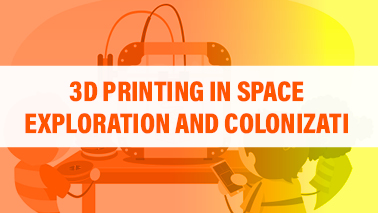
3D printing, also known as additive manufacturing, has become an essential technology in space exploration and colonization due to its ability to produce complex structures using a variety of materials. Here are some advancements and applications of 3D printing in space:
Reduced Payload: 3D printing enables astronauts to create tools, spare parts, and even habitats out of locally available materials. This eliminates the need to carry these goods from Earth, resulting in a greatly reduced payload and cost.
Customization: Astronauts can swiftly create custom tools and parts adapted to specific mission requirements, such as unusually shaped brackets or specialized equipment, thereby increasing mission efficiency.
On-Demand Manufacturing: 3D printers can manufacture goods on demand, eliminating the need to have a huge inventory of replacement components. This is critical for long-term missions where resupply missions are infrequent.
Fix and Maintenance: Astronauts can utilize 3D printing to fix broken equipment or structures, increasing the life of vital components and decreasing the need for complicated repair flights.
In-Situ Resource Utilization (ISRU): By exploiting local resources like as regolith (moon dust) or Martian soil, 3D printers can create structures and dwellings, allowing for long-term colonization of distant worlds.
Bioprinting: Scientists are looking at the idea of employing 3D bioprinting to create human tissues and organs in space, which might be critical for long-duration trips and future colonies.
Spacecraft Components: 3D printing can be used to create lightweight, high-performance spacecraft components like thrusters, antennae, and heat shields, thereby increasing total spaceship efficiency.
Advances in 3D printing technologies, such as faster printing, greater resolution, and the capacity to print with a broader range of materials, are constantly improving the technology's capabilities in space exploration and colonization.
Tags
Additive Manufacturing Conferences USA
3D Printing Conferences Asia
3D Printing Conferences
3D Printing Conferences Europe
Material Extrusion Conferences
3D Printing Conferences 2026
Additive Manufacturing Conferences Japan
3D Printing Conferences 2026 USA
3D Printing Conferences 2026 Europe
3D Printing Conferences China
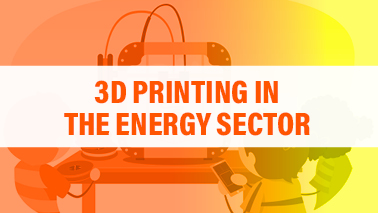
3D printing has made big steps forward in the energy field, helping to cut costs, boost efficiency, and make designs more flexible, among other things. Here are some of the most important advances and uses of 3D printing in the energy industry:
Making models and tools: In the energy industry, 3D printing is often used to make unique tools and fixtures and to make quick prototypes of parts and components. In contrast to standard ways of making things, this cuts down on lead times and costs.
Customized Components: 3D printing makes it possible to make parts that are very close to exactly what is needed. This is especially helpful in the energy industry, where parts often have to meet strict efficiency standards.
Complex Geometries: With additive manufacturing, it's possible to make shapes that are too complicated for other methods of production to handle. This can help make designs more energy-efficient and make energy systems work better.
Material Development: Scientists are working hard to find new 3D printing materials that can work well in harsh situations like high temperatures and places where metals can rust. These materials could completely change the energy industry by making it possible to make parts that last longer and work better.
Production of Spare Parts: 3D printing can be used to make spare parts as needed, so there's no need to keep a lot of them on hand and there's less downtime for repairs and upkeep.
Storage of Energy: 3D printing is being used to make new ways to store energy, like supercapacitors and improved battery designs. These changes could help solve some of the biggest problems that green energy sources have, like power outages.
Microreactors: Tiny nuclear reactors or hydrogen fuel cells are being made with additive manufacturing to make microreactors for making energy. Not only are these reactors more efficient than standard ones, they can also be used in more places.
Basically, 3D printing could change the energy industry by making it possible to make parts that work better and last longer, while also cutting costs and speeding up innovation. We can look forward to even more exciting changes in the years to come as technology keeps getting better.
Tags
3D Printing Conferences
Additive Manufacturing Conferences Asia
Material Extrusion Conferences
Additive Manufacturing Conferences Japan
Additive Manufacturing Conferences 2026
Additive Manufacturing Conferences
3D Printing Conferences China
3D Printing Conferences 2026
3D Printing Conferences 2026 USA
Additive Manufacturing Conferences USA
Additive Manufacturing Conferences Europe
3D Printing Conferences Europe
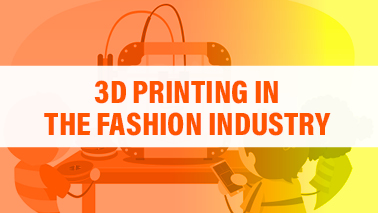
3D printing has transformed the fashion business by pushing the boundaries of design, customisation, and sustainability. Here are some major advances and impacts of 3D printing in fashion:
Customization: One of the most important benefits of 3D printing in fashion is the capacity to make highly individualized and tailored outfits. Designers may simply adjust pieces to specific body shapes and sizes, providing customers with a one-of-a-kind and customized experience.
Sophisticated Designs: 3D printing enables designers to create detailed and sophisticated designs that are difficult or impossible to execute using traditional production processes. This allows for the development of new aesthetics and forms in fashion.
Sustainability: By minimizing material waste and energy usage, 3D printing has the potential to make fashion production more environmentally friendly. Additive manufacturing technologies reduce the need for mass production and inventory stockpiling, resulting in a more environmentally responsible approach to fashion manufacturing.
Prototyping and Rapid Iteration: 3D printing allows designers to swiftly prototype and iterate their creations, accelerating the design and manufacturing processes. This quick prototyping capability enables greater experimentation and innovation in fashion design.
Materials Innovation: Advancements in 3D printing technology have resulted in the creation of a diverse range of materials suited for fashion applications. Designers have a wide range of alternatives for designing 3D printed clothes, from flexible and durable plastics to biodegradable and even recycled materials.
Fashion Shows & Runways: 3D printed fashion pieces have appeared on runways all around the world, demonstrating the technology's ability to push the limits of traditional fashion design. Designers frequently use these platforms to showcase the ingenuity and innovation that 3D printing enables in fashion.
Partnerships and Cross-disciplinary Work: 3D printing has encouraged partnerships among fashion designers, engineers, and material scientists, resulting in interdisciplinary innovation in the industry. These collaborations have led to significant advances in material science, design processes, and production procedures.
Consumer Acceptance: While 3D printed fashion remains rather niche, there is significant consumer interest and acceptance, notably in the accessories and footwear categories. As technology advances and the spectrum of printable materials expands, we should expect 3D printed clothing to become more widely adopted in the future.
Overall, 3D printing continues to push the boundaries of fashion design, allowing for greater customisation, sustainability, and innovation in the industry. As technology advances and becomes more widely available, it has the potential to radically change the way we think about and approach fashion design and manufacturing.
Tags
Additive Manufacturing Conferences Asia
3D Printing Conferences 2026
Material Extrusion Conferences
Additive Manufacturing Conferences Japan
3D Printing Conferences Middle East
3D Printing Conferences Japan
3D Printing Conferences 2026 Europe
3D Printing Conferences
3D Printing Conferences Asia
3D Printing Conferences Singapore
3D Printing Conferences Europe
3D Modeling Conferences
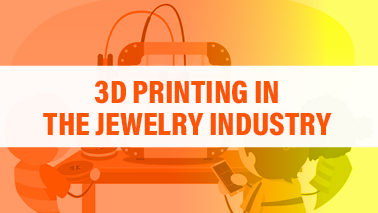
3D printing has transformed the jewelry industry, providing designers and manufacturers with a whole new range of possibilities for crafting elaborate and personalized items. Here's a rundown of how 3D printing is affecting the jewellery business and some of its advancements:
Customization: One of the most significant benefits of 3D printing in jewelry is the possibility to produce highly personalized items based on individual tastes. Customers can quickly request changes to designs, such as changing gemstone settings or tweaking sizes, without the need for costly molds or tools.
Complex Designs: Traditional jewellery manufacturing techniques can have limitations when it comes to crafting complex geometries and exquisite detailing. Designers may use 3D printing to unleash their creativity and create intricate patterns that would be difficult or impossible to achieve with traditional methods.
Reduced Time to Market: 3D printing enables rapid prototype and iteration, dramatically accelerating the design and production processes. Designers can swiftly bring their ideas to life, experiment with numerous versions, and make changes on the fly, decreasing the time to market for new jewelry lines.
Cost-Effectiveness: Although the initial investment in 3D printing technology may be large, it can result in long-term cost savings, especially for small-scale production runs or one-of-a-kind pieces. Traditional manufacturing methods can necessitate expensive tooling and labor-intensive processes, whereas 3D printing can be more cost-effective for making low-volume, high-value products.
Material Variety: 3D printing technology have improved to accommodate a diverse range of materials ideal for jewellery creation, including valuable metals such as gold, silver, and platinum, as well as unusual materials like as titanium and ceramics. Designers can make one-of-a-kind artworks by experimenting with different materials and textures.
Integration with Traditional Techniques: While 3D printing has numerous benefits, it is also being merged into traditional jewelry-making procedures. Designers, for example, may combine 3D printing and handcrafting to obtain a piece's intended finish and aesthetic. This combination of ancient and new techniques allows craftsmen to take use of the best of both worlds..
On-Demand Production: Because 3D printing allows for on-demand manufacturing, jewelry may be produced as needed, lowering inventory costs and waste. This adaptability enables businesses to provide a wider selection of styles while avoiding the danger of overstocking or outmoded inventory.
Technology Advancements: Continuous advances in 3D printing technology, such as increased resolution, speed, and material qualities, are broadening the possibilities for jewelry design and production. For example, the advancement of high-resolution 3D printers and biocompatible materials has created new options for manufacturing personalized and wearable tech-enabled jewelry.
Overall, 3D printing is reshaping the jewelry industry by empowering designers, lowering costs, and providing clients with unprecedented customisation options. As technology advances, we may expect even more fascinating breakthroughs at the convergence of 3D printing and jewelry design.
Tags
Additive Manufacturing Conferences Japan
Additive Manufacturing Conferences USA
3D Printing Conferences 2026 Europe
3D Printing Conferences 2026 USA
Additive Manufacturing Conferences 2026
Material Extrusion Conferences
3D Printing Conferences China
Additive Manufacturing Conferences
3D Printing Conferences Singapore
3D Printing Conferences
Additive Manufacturing Conferences Asia
3D Printing Conferences 2026
3D Printing Conferences Europe

The 3D printing industry has seen substantial growth and advancements in recent years.
An overview of the industry:
Market Size: The 3D printing business has been rapidly expanding, with global sales exceeding billions of dollars each year. It covers a wide range of industries, including aerospace, automotive, healthcare, consumer goods, and more.
Key players: include Stratasys, 3D Systems, HP, GE Additive, EOS GmbH, and Materialise. Furthermore, there is a rising number of entrepreneurs developing in certain areas of the 3D printing ecosystem.
Technology Advancements: The industry has seen considerable technology advances, resulting in better efficiency, precision, and the ability to print with a broader spectrum of materials. Notable advancements include:
Improved Printers: High-speed, high-resolution, multi-material printers are becoming more widespread.
New Materials: The development of new materials such as metals, ceramics, and biocompatible polymers has broadened the range of possible applications.
Large-scale Printing: It is getting easier to print large-scale items, such as entire building structures.
Additive manufacturing techniques: Binder jetting, direct metal laser sintering (DMLS), and stereolithography (SLA) are examples of additive manufacturing innovations that are pushing the limits of what is possible.
Software Solutions: Improved software solutions for design, simulation, and optimization improve workflow and allow for the printing of more complicated geometries.
Applications: 3D printing is used in a variety of industries for prototyping, tooling, creating end-of-life parts, and even medical applications such as customized implants and prostheses. The capacity to quickly iterate designs and create personalized items is a significant advantage of 3D printing.
Market Trends: Some recent trends in the 3D printing business include:
Manufacturing Adoption: More organizations are using 3D printing into their processes to cut lead times, slash costs, and enable on-demand production.
Customisation and Personalization: As consumers demand more personalized products, 3D printing makes this easier by allowing for mass customisation.
Sustainability: The emphasis on sustainability is propelling the development of eco-friendly materials and techniques in the 3D printing industry.
Challenges: Despite its rapid expansion, the 3D printing sector still confronts speed and scale limits, material prices, regulatory difficulties (particularly in healthcare), and intellectual property concerns.
Overall, the 3D printing business is evolving and expanding its capabilities, with advancements generating new applications and opportunities in a variety of sectors.
Tags
3D Printing Conferences China
3D Modeling Conferences
Additive Manufacturing Conferences
3D Printing Conferences Singapore
3D Printing Conferences Middle East
Additive Manufacturing Conferences Japan
3D Printing Conferences 2026 Europe
3D Printing Conferences Europe
3D Printing Conferences Asia
3D Printing Conferences 2026 USA
Additive Manufacturing Conferences Europe
Additive Manufacturing Conferences 2026
Material Extrusion Conferences
Computer-Aided Design Conferences
Additive Manufacturing Conferences USA
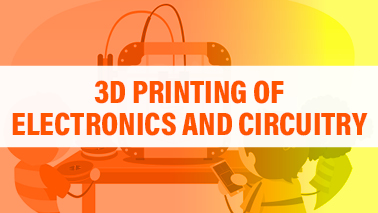
3D printing of electronics, also called 3D printed electronics or 3D printed circuitry, is a new technology that combines traditional 3D printing techniques with electronics manufacturing procedures. This method enables direct layer-by-layer production of electronic components, circuits, and devices.
Advances in 3D printing of electronics have been considerable, resulting in increased efficiency, speed, and complexity of printed electronics. Some important advancements include:
Multi-material printing: Modern 3D printers can now print various materials at the same time, allowing for the combination of conductive materials (such as metals or conductive inks) and non-conductive materials in a single print. This allows for the production of complicated electronic components and circuits in a single printing process.
Increased resolution: Advancements in printing technology have resulted in higher resolution prints, allowing for finer details and more exact placement of electronic components. This is critical for developing complex circuits and tiny electronic devices.
Functional inks: The introduction of specialized conductive inks has broadened the spectrum of materials that can be utilized in 3D printing electronics. These inks can be customized for specialized purposes including flexible circuits and high-performance electronics.
Sensor integration: 3D printing technology has made it possible to integrate sensors directly into printed components, creating new possibilities for smart, sensor-rich systems.
Customization and quick prototyping: One of the primary advantages of 3D printing is its ability to rapidly manufacture unique prototypes and limited production runs. This is especially beneficial for electronics, where quick iteration and customisation are frequently required.
Hybrid printing procedures: Some sophisticated approaches combine traditional electronics manufacturing processes with 3D printing, such as printing circuitry on pre-fabricated substrates or integrating electronic components into 3D printed structures.
Overall, improvements in electronics 3D printing are pushing innovation in the field of electronics manufacturing, allowing for the creation of new types of devices and new design and production possibilities.
Tags
Additive Manufacturing Conferences 2026
Additive Manufacturing Conferences
Additive Manufacturing Conferences Asia
3D Printing Conferences Europe
3D Printing Conferences Singapore
Additive Manufacturing Conferences Europe
3D Printing Conferences 2026 USA
3D Printing Conferences
3D Printing Conferences 2026 Europe
Computer-Aided Design Conferences
3D Printing Conferences Middle East
Additive Manufacturing Conferences USA
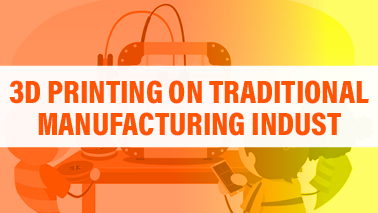
3D printing, or additive manufacturing, has had a significant impact on traditional manufacturing businesses. Here are some important ways it has influenced and advanced these industries:
Prototyping: Rapid prototyping was one of 3D printing's first and most important applications. It enables manufacturers to swiftly and cost-effectively create prototypes of parts and products, allowing for faster design iterations and a shorter time to market.
Complex Geometries: Traditional manufacturing methods are frequently limited in their ability to produce complex geometries. However, 3D printing can create very detailed patterns and structures that are difficult or impossible to build with traditional methods.
Customisation: 3D printing offers mass customisation, allowing producers to design items to specific consumer needs and tastes. This has important ramifications for industries such as healthcare, which can manufacture personalized medical equipment and implants.
Supply Chain Efficiency: 3D printing allows for on-demand manufacture closer to the point of use, reducing the need for a complex supply chain. This can contribute to cost savings and shorter lead times.
Sustainability: Additive manufacturing can be more environmentally friendly than traditional manufacturing techniques since it uses only the material required for the object being created.
Tooling and Fixtures: 3D printing is also utilized to create jigs, fixtures, and tooling for traditional manufacturing processes, providing faster and more cost-effective solutions than traditional methods.
Advancements in materials, such as metals, composites, and ceramics, have greatly extended the spectrum of materials that can be utilized in 3D printing. This has created new opportunities for producing high-performance components.
Hybrid Manufacturing: Hybrid manufacturing combines traditional machining and 3D printing processes in a single machine, allowing the benefits of both technologies to be maximized in a single part.
Reduced Costs: While 3D printing is more expensive per item than traditional manufacturing for big production runs, it can be more cost-effective for small-batch production, prototypes, or parts with complex geometries.
Future Potential: As 3D printing technologies progress, there is room for even greater integration with traditional production processes, resulting in increased efficiency, personalization, and sustainability.
Overall, 3D printing has had a considerable impact on traditional manufacturing industries, providing new options for design, production, and efficiency.
Tags
3D Printing Conferences Europe
3D Printing Conferences 2026
3D Printing Conferences
3D Printing Conferences Singapore
3D Printing Conferences 2026 USA
3D Printing Conferences Middle East
3D Printing Conferences Asia
3D Modeling Conferences
Additive Manufacturing Conferences 2026
Computer-Aided Design Conferences
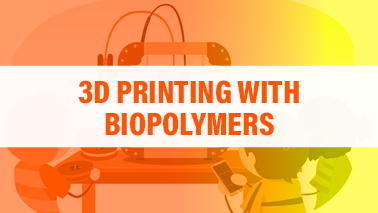
3D printing using biopolymers has improved dramatically in recent years, offering a more environmentally friendly alternative to traditional plastic materials. Biopolymers are polymers derived from renewable biomass sources such as plants, algae, or bacteria. They can be biodegradable, compostable, or both.
Here are some notable advances in 3D printing with biopolymers.
Material development: Researchers have developed several biopolymers suitable for 3D printing, including polylactic acid (PLA), polyhydroxyalkanoates (PHA), and cellulose-derived compounds. Flexible, strong, and biodegradable, these materials are suitable for a wide range of applications.
Improved Printability: Advances in processing methods and material compositions have boosted biopolymer printability, allowing for more complex shapes and higher resolution prints. This increases the range of applications for biopolymer-based 3D printing.
Functional Materials: Biopolymer composites including carbon nanotubes, graphene, or natural fibers have been developed to improve the functionality of printed products. These materials may offer exceptional mechanical, thermal, and electrical properties.
Medical Applications: Biopolymers are rapidly being used in medical applications such as tissue engineering, drug delivery, and medical device manufacturing. Biopolymers that are both biocompatible and biodegradable are ideal for these applications.
Environmental Impact: Using biopolymers in 3D printing can help to lessen additive manufacturing's environmental footprint. Biodegradable biopolymers can degrade naturally, lowering waste and pollution.
Cost Reduction: As technology advances and demand rises, the cost of biopolymer-based filaments and materials falls, making them more affordable to a larger spectrum of people.
Regulatory Considerations: As biopolymers are increasingly used in medical and food-related applications, regulatory agencies are formulating standards and recommendations to ensure their safety and efficacy.
Overall, advances in 3D printing using biopolymers are encouraging the adoption of sustainable manufacturing techniques and creating new opportunities in industries like as healthcare, consumer goods, and packag
Tags
Additive Manufacturing Conferences Japan
3D Printing Conferences
Additive Manufacturing Conferences 2026
3D Printing Conferences 2026 Europe
3D Printing Conferences Europe
3D Printing Conferences Singapore
3D Printing Conferences 2026 USA
Additive Manufacturing Conferences USA
3D Printing Conferences Japan
Additive Manufacturing Conferences Europe
Material Extrusion Conferences
Additive Manufacturing Conferences Asia
Computer-Aided Design Conferences

Intellectual property (IP) issues in 3D printing have become increasingly complex with the advancements in the technology. Here are some key points to consider:
Copyright Infringement: 3D printing allows for the easy reproduction of copyrighted objects, such as sculptures, toys, and other artistic works. This can lead to issues of copyright infringement if the objects are reproduced without permission from the copyright holder
Design Patents: Design patents protect the ornamental design of functional items. With 3D printing, there is a risk of infringing design patents if a 3D printed object replicates a patented design.
Trademark Infringement: Trademarks protect brand names, logos, and other identifiers of goods and services. 3D printing can be used to create counterfeit goods that infringe on trademarks.
Digital Rights Management (DRM): DRM technologies are used to control the use of digital content. In the context of 3D printing, DRM can be used to control access to and use of 3D printable files.
Reverse Engineering: 3D printing can be used to reverse engineer products, which can raise issues related to trade secrets and patent infringement.
Fair Use: In some cases, the use of copyrighted material in 3D printing may be considered fair use, such as for educational or research purposes. However, this can be a complex legal issue.
Jurisdictional Issues: IP laws vary from country to country, which can create challenges in enforcing IP rights in the context of 3D printing, especially when digital files can be easily shared across borders.
As 3D printing technology continues to advance, it is important for IP laws and regulations to evolve as well to address the unique challenges posed by this technology.
Tags
3D Printing Conferences 2026 Europe
Additive Manufacturing Conferences
3D Printing Conferences China
Material Extrusion Conferences
Additive Manufacturing Conferences Asia
Additive Manufacturing Conferences USA
3D Printing Conferences 2026 USA
Additive Manufacturing Conferences Japan
3D Printing Conferences 2026
3D Printing Conferences Asia
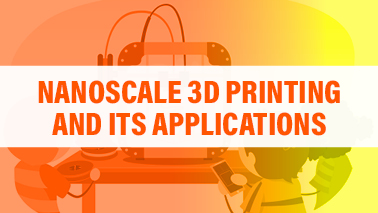
Nanoscale 3D printing, also known as nanoscale additive manufacturing, involves the fabrication of structures or devices at the nanometer scale. This technology has numerous applications across various fields and has seen significant advancements in recent years.
Applications:
Biomedical: Nanoscale 3D printing is used to create intricate structures for drug delivery systems, tissue engineering, and biosensors.
Electronics: It is used to create nanoscale features for electronics, such as nanowires, nanotransistors, and nanoscale circuits.
Optics: Nanoscale 3D printing is used to create nanostructures for optical devices, such as lenses, waveguides, and metamaterials.
Energy: It is used to create nanoscale structures for energy storage devices, such as batteries and supercapacitors, as well as for energy harvesting devices.
Materials Science: Nanoscale 3D printing is used to create novel materials with unique properties, such as lightweight, high-strength materials.
Advancements:
Resolution: Advances in nanoscale 3D printing have led to improvements in resolution, allowing for the creation of structures with nanometer-scale features.
Speed: Researchers have developed faster nanoscale 3D printing techniques, enabling the rapid fabrication of complex structures.
Materials: There have been advancements in the range of materials that can be used in nanoscale 3D printing, including polymers, metals, ceramics, and composites.
Multi-material Printing: Researchers have developed techniques for printing with multiple materials simultaneously, enabling the creation of complex, multi-functional structures.
Bioprinting: In the field of bioprinting, nanoscale 3D printing has enabled the precise fabrication of tissue scaffolds and organoids for regenerative medicine applications.
Overall, nanoscale 3D printing holds great promise for a wide range of applications and is a rapidly evolving field with ongoing advancements in resolution, speed, materials, and capabilities.
Tags
Additive Manufacturing Conferences
Computer-Aided Design Conferences
Additive Manufacturing Conferences Asia
Additive Manufacturing Conferences Europe
3D Printing Conferences
3D Printing Conferences Singapore
Additive Manufacturing Conferences USA
3D Printing Conferences 2026
3D Modeling Conferences
3D Printing Conferences 2026 Europe
Additive Manufacturing Conferences 2026
3D Printing Conferences 2026 USA
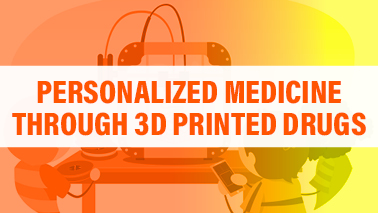
Personalized medicine, coupled with advancements in 3D printing technology, has opened up new frontiers in pharmaceuticals. Here's a breakdown of the concept and its advancements:
Customized Drug Dosage: 3D printing allows for the creation of bespoke drug dosages tailored to individual patients' needs. This is particularly beneficial for patients who require precise dosages due to factors such as age, weight, metabolism, or specific health conditions.
Complex Drug Formulations: Traditional manufacturing methods often limit the complexity of drug formulations. However, 3D printing enables the creation of intricate drug structures that may have enhanced efficacy or controlled release properties, offering more targeted treatment options.
Combination Therapies: Some medical conditions require a combination of drugs to achieve optimal treatment outcomes. 3D printing facilitates the incorporation of multiple active ingredients into a single dosage form, simplifying medication regimens for patients and improving treatment adherence.
Patient-Specific Drug Delivery Systems: Beyond simply customizing drug dosages, 3D printing enables the development of personalized drug delivery systems. These systems can be designed to release drugs at specific locations within the body or at predetermined rates, optimizing therapeutic outcomes while minimizing side effects.
Accelerated Drug Development: 3D printing expedites the drug development process by allowing researchers to rapidly prototype and test new drug formulations. This technology enables iterative refinement of drug designs, leading to more efficient drug discovery and development pipelines.
On-Demand Production: Traditional drug manufacturing relies on large-scale production batches, which can lead to excess inventory and wastage. With 3D printing, drugs can be produced on-demand, reducing the need for stockpiling and minimizing supply chain inefficiencies.
Tailored Pediatric Medications: Children often require smaller or liquid formulations of drugs, which may not be readily available from conventional manufacturers. 3D printing offers a solution by enabling the production of pediatric-specific medications with precise dosages and palatable formulations.
Patient Engagement and Compliance: Personalized medications created through 3D printing can foster greater patient engagement in their treatment plans. Patients may feel more empowered and invested in their health when they have a direct role in the customization of their medications, potentially leading to improved treatment adherence.
Overall, the convergence of personalized medicine and 3D printing holds significant promise for revolutionizing the pharmaceutical industry, ushering in an era of tailored treatments that better meet the diverse needs of individual patients.
Tags
3D Printing Conferences Asia
3D Printing Conferences 2026 Europe
3D Printing Conferences China
3D Printing Conferences 2026 USA
3D Printing Conferences 2026
Additive Manufacturing Conferences Japan
3D Modeling Conferences
Additive Manufacturing Conferences
3D Printing Conferences Europe
3D Printing Conferences Singapore
Additive Manufacturing Conferences Asia
3D Printing Conferences Middle East
Additive Manufacturing Conferences USA
Material Extrusion Conferences
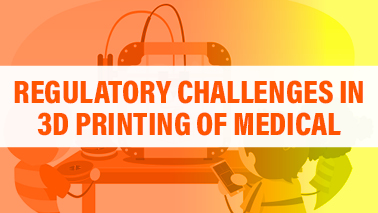
3D printing of medical devices offers numerous advantages, such as customized design, rapid prototyping, and cost-effective manufacturing. However, it also presents unique regulatory challenges due to the complexity of the technology and the critical nature of medical devices. Here are some key regulatory challenges and advancements in 3D printing of medical devices:
Regulatory Approval Process: One of the main challenges is navigating the regulatory approval process. The U.S. Food and Drug Administration (FDA) and other regulatory bodies require manufacturers to demonstrate the safety and efficacy of 3D-printed medical devices through rigorous testing and documentation.
Material Selection and Validation: Ensuring the biocompatibility, mechanical properties, and sterilizability of 3D-printed materials is crucial. Regulatory bodies require manufacturers to validate the materials used in 3D printing processes to ensure they meet the necessary standards.
Quality Control and Consistency: Maintaining quality control and consistency in 3D printing processes is challenging due to the variability in printing parameters and material properties. Manufacturers need to establish robust quality control processes to ensure the safety and performance of their devices.
Post-Market Surveillance: Monitoring the performance of 3D-printed medical devices once they are on the market is essential for identifying and addressing any issues that may arise. Manufacturers need to implement post-market surveillance systems to collect and analyze data on device performance and patient outcomes.
Intellectual Property Rights: Protecting intellectual property rights in 3D printing is challenging due to the ease of replicating and distributing digital designs. Manufacturers need to implement strategies to protect their designs and prevent unauthorized use.
Advancements in Regulatory Frameworks: Regulatory bodies are continuously updating their frameworks to address the unique challenges posed by 3D printing. For example, the FDA has issued guidance documents specifically addressing the regulatory considerations for 3D-printed medical devices.
Standardization and Certification: Establishing standardized testing methods and certification processes for 3D-printed medical devices is crucial for ensuring their safety and efficacy. Industry organizations and regulatory bodies are working to develop standards specific to 3D printing in healthcare.
Advancements in bioprinting technologies have the potential to revolutionize regenerative medicine and tissue engineering. However, regulatory challenges related to bioprinted constructs, such as cell viability and functionality, remain to be addressed.
Tags
3D Printing Conferences 2026 Europe
3D Printing Conferences
3D Printing Conferences Singapore
Additive Manufacturing Conferences
3D Printing Conferences Japan
Additive Manufacturing Conferences USA
Additive Manufacturing Conferences Japan
3D Printing Conferences Middle East
3D Modeling Conferences
3D Printing Conferences 2026
Additive Manufacturing Conferences Asia
3D Printing Conferences China
Computer-Aided Design Conferences
Additive Manufacturing Conferences Europe
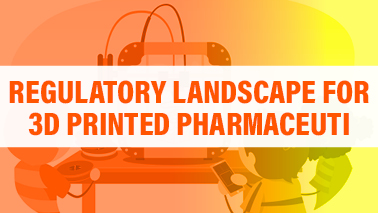
The regulatory landscape for 3D printed pharmaceuticals is still evolving but has seen advancements in recent years. Here's a brief overview:
FDA Guidelines: The U.S. Food and Drug Administration (FDA) has been actively involved in developing guidelines for 3D printed pharmaceuticals. In 2017, the FDA released its guidance document titled "Technical Considerations for Additive Manufactured Medical Devices," which includes considerations applicable to 3D printed pharmaceuticals.
Quality Control: One of the key challenges in 3D printing pharmaceuticals is ensuring consistent quality and dosage. Regulatory bodies require robust quality control measures to ensure that 3D printed drugs meet safety and efficacy standards.
Material Approval: Regulatory agencies typically require approval of the materials used in 3D printing pharmaceuticals. This includes not only the drug formulation but also the printing materials such as polymers and excipients.
Process Validation: Validation of the 3D printing process is crucial to demonstrate its reproducibility and reliability. This involves establishing parameters such as printing temperature, layer thickness, and printing speed, and demonstrating that the process consistently produces pharmaceuticals that meet quality standards.
Personalized Medicine: 3D printing enables the production of personalized medications tailored to individual patient needs. However, this introduces additional regulatory challenges related to batch size, manufacturing controls, and ensuring the safety and efficacy of customized medications.
International Regulations: Regulatory frameworks for 3D printed pharmaceuticals vary between countries. Companies operating in multiple jurisdictions must navigate different regulatory requirements and ensure compliance with each region's standards.
Advancements: Advancements in 3D printing technology, such as continuous inkjet printing and powder bed printing, are enabling more precise control over drug delivery and dosage. These advancements may require updates to existing regulatory guidelines to address new capabilities and challenges.
Overall, while the regulatory landscape for 3D printed pharmaceuticals is still developing, regulatory agencies are actively engaging with industry stakeholders to address challenges and ensure the safe and effective use of this innovative technology.
Tags
3D Printing Conferences Asia
Additive Manufacturing Conferences Asia
3D Printing Conferences 2026 Europe
Material Extrusion Conferences
Additive Manufacturing Conferences USA
3D Printing Conferences
Additive Manufacturing Conferences Japan
3D Printing Conferences Singapore
Additive Manufacturing Conferences
3D Printing Conferences 2026
Additive Manufacturing Conferences 2026
3D Modeling Conferences

Additive manufacturing, also known as 3D printing, is a process that creates three-dimensional objects by layering materials, typically from digital models. This technology has seen significant advancements over the years, leading to its widespread adoption in various industries. Here are some key advancements in additive manufacturing:
Improved Materials: Initially, additive manufacturing was limited to plastics. However, there have been advancements in materials, including metals, ceramics, and composites. This expansion of materials has opened up new applications in industries such as aerospace, automotive, and healthcare.
Increased Speed and Scale: Early 3D printers were slow and could only produce small objects. Modern additive manufacturing machines can produce larger objects at a much faster pace, making them more suitable for industrial production.
Enhanced Precision and Resolution: Advances in printing technologies have improved the precision and resolution of 3D printers, allowing for the production of highly detailed and complex objects.
Multi-material and Multi-color Printing: Some printers can now print with multiple materials or colors simultaneously, enabling the creation of objects with varying properties or aesthetics in a single print.
Automation and Robotics: Automation and robotics have been integrated into additive manufacturing processes, increasing efficiency and reducing the need for human intervention.
In-situ Monitoring and Quality Control: Sensors and monitoring systems are being used to monitor the printing process in real-time, ensuring the quality of the printed objects.
Generative Design and Optimization: Software tools for generative design and optimization are being used to create designs that are specifically optimized for additive manufacturing, leading to lighter and more efficient structures.
Bioprinting: In the field of healthcare, additive manufacturing has been used for bioprinting, where living cells are printed to create tissues and organs for transplantation or research.
Sustainability: Additive manufacturing has the potential to be more sustainable than traditional manufacturing methods, as it can reduce material waste and energy consumption.
These advancements have made additive manufacturing a versatile and powerful technology with applications in various industries, including aerospace, automotive, healthcare, and consumer goods.
Tags
Additive Manufacturing Conferences
Additive Manufacturing Conferences Asia
3D Printing Conferences Singapore
3D Printing Conferences Japan
Material Extrusion Conferences
3D Printing Conferences
3D Printing Conferences Middle East
Additive Manufacturing Conferences Japan
3D Printing Conferences China
Additive Manufacturing Conferences Europe
3D Printing Conferences Europe
Additive Manufacturing Conferences USA
3D Printing Conferences 2026

Additive manufacturing (AM), often referred to as 3D printing, has become increasingly significant in the defense sector due to its potential to revolutionize various aspects of military operations. Here are some key advancements and applications:
Rapid Prototyping: Additive manufacturing allows for the quick and cost-effective production of prototypes. This is particularly useful in the defense sector, where rapid iteration and testing of new equipment and parts are crucial.
Customization: AM enables the customization of parts and equipment to meet specific military needs. This includes personalized equipment for soldiers, as well as tailored components for vehicles and aircraft.
Supply Chain Resilience: By enabling on-demand production of spare parts and components, AM can reduce reliance on traditional supply chains, which can be vulnerable to disruption in conflict zones or remote locations.
Complex Geometries: AM techniques can produce parts with complex geometries that are difficult or impossible to achieve with traditional manufacturing methods. This can lead to lighter, more efficient designs for components such as aircraft engine parts and missile components.
Materials Advancements: Advances in materials science have expanded the range of materials that can be used in additive manufacturing, including high-strength metals, ceramics, and even composites. This allows for the production of parts with improved performance characteristics.
Reduced Weight and Logistics: AM can consolidate multiple parts into a single component, reducing weight and simplifying logistics. This can lead to lighter vehicles and aircraft, as well as reduced maintenance requirements.
On-Demand Manufacturing: In remote or forward-deployed locations, AM technology allows for the on-demand production of parts and equipment, reducing the need for extensive stockpiles and logistical support.
Stealth and Security: Additive manufacturing can enable the production of components with integrated features for stealth and security, such as reduced radar cross-sections or embedded electronics.
Sustainability: AM has the potential to reduce material waste compared to traditional subtractive manufacturing methods. Additionally, it can facilitate the use of recycled materials in production, further enhancing sustainability.
Cybersecurity Challenges: As with any digital technology, additive manufacturing presents cybersecurity challenges, particularly regarding the integrity of digital design files and the potential for cyberattacks on AM systems.
Overall, additive manufacturing holds significant promise for the defense sector, offering opportunities for innovation, customization, and resilience in the face of evolving threats and operational requirements. However, ongoing research and development are needed to fully realize its potential and address associated challenges.
Tags
3D Printing Conferences Middle East
3D Modeling Conferences
Additive Manufacturing Conferences Japan
3D Printing Conferences Singapore
Computer-Aided Design Conferences
Additive Manufacturing Conferences
Additive Manufacturing Conferences Europe
3D Printing Conferences Europe
3D Printing Conferences Asia
3D Printing Conferences China
Material Extrusion Conferences
3D Printing Conferences 2026 USA
3D Printing Conferences 2026 Europe
Additive Manufacturing Conferences 2026
3D Printing Conferences 2026
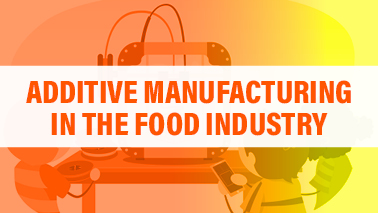
Additive manufacturing, commonly known as 3D printing, has made significant strides in the food industry, offering innovative solutions in food production, customization, and sustainability. Here are some advancements and applications of additive manufacturing in the food industry:
Customized Nutrition: 3D printing allows for the creation of personalized food products tailored to individual nutritional needs. This is particularly beneficial for people with specific dietary requirements or health conditions.
Food Design and Creativity: Chefs and food designers can use 3D printing to create intricate and visually appealing food designs that would be challenging to achieve through traditional methods.
Improved Food Safety: Additive manufacturing can reduce the risk of food contamination by minimizing human contact during the production process. This is especially important in environments where food safety is critical, such as hospitals and nursing homes.
Waste Reduction: 3D printing enables the creation of food products with precise portions, reducing food waste. It also allows for the use of alternative ingredients, such as food by-products, which can help reduce waste in the food supply chain.
Sustainable Food Production: Additive manufacturing can contribute to more sustainable food production by using fewer resources, such as water and energy, compared to traditional food manufacturing processes.
Novel Food Experiences: 3D printing can create foods with unique textures, shapes, and structures that would be difficult or impossible to achieve through traditional cooking methods.
On-Demand Food Production: Restaurants and food service providers can use 3D printing to produce food on-demand, reducing the need for large-scale food production and storage.
Food Customization for Dietary Restrictions: Individuals with dietary restrictions or allergies can benefit from 3D-printed foods tailored to their needs, ensuring they receive safe and suitable options.
Research and Development: 3D printing allows researchers to explore new food formulations and textures, leading to the development of innovative food products.
Despite these advancements, challenges remain, such as the cost of 3D printing technology, the limited availability of food-grade materials, and regulatory hurdles. However, ongoing research and development in additive manufacturing are likely to lead to further advancements and increased adoption in the food industry in the coming years.
Tags
3D Printing Conferences Asia
Additive Manufacturing Conferences
3D Printing Conferences
3D Printing Conferences 2026
3D Printing Conferences Middle East
Material Extrusion Conferences
3D Printing Conferences Japan
3D Printing Conferences Singapore
Additive Manufacturing Conferences USA
Additive Manufacturing Conferences 2026
3D Printing Conferences China
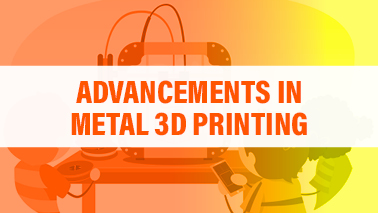
Metal 3D printing, also known as additive manufacturing, has seen significant advancements in recent years, revolutionizing industries such as aerospace, automotive, healthcare, and more. Here are some of the notable advancements:
Improved Resolution and Surface Finish: Advances in metal 3D printing technologies have led to improved resolution and surface finish, allowing for the production of intricate and complex geometries with smoother surface textures. This improvement is crucial for applications where high precision is required.
Increased Speed: Manufacturers are continually working on increasing the speed of metal 3D printing processes. Faster printing speeds mean higher throughput and reduced production times, making additive manufacturing more competitive with traditional manufacturing methods.
Expanded Material Options: Initially, metal 3D printing was limited to a few types of metals, such as titanium, stainless steel, and aluminum. However, there has been a significant expansion in the range of printable materials, including high-performance alloys, exotic metals, and metal composites. This expansion enables a broader range of applications and enhances the material properties achievable through additive manufacturing.
Multi-Material Printing: Some metal 3D printing systems now have the capability to print with multiple materials simultaneously. This opens up new possibilities for creating complex metal parts with varying material properties, such as graded structures or hybrid materials, which can offer improved performance and functionality.
In-Situ Monitoring and Control: Real-time monitoring and control systems have been developed to ensure quality and consistency during the metal 3D printing process. These systems use sensors and advanced algorithms to detect defects, monitor process parameters, and adjust printing parameters in real-time, reducing the risk of defects and improving overall part quality.
Large-Scale Printing: While metal 3D printing has traditionally been limited to small to medium-sized parts, there has been progress in scaling up the technology to print larger components. This is particularly relevant for industries like aerospace and automotive, where there is a demand for larger, more complex parts.
Integration with Traditional Manufacturing Processes: Metal 3D printing is increasingly being integrated with traditional manufacturing processes such as CNC machining and post-processing techniques like heat treatment and surface finishing. This integration allows for the creation of fully functional parts with improved mechanical properties and surface quality.
Reduced Costs: As metal 3D printing technology matures and becomes more widespread, the costs associated with equipment, materials, and post-processing are decreasing. This trend is making metal 3D printing more accessible to a broader range of industries and applications.
Overall, these advancements in metal 3D printing technology are driving innovation across various industries, enabling the production of highly customized, lightweight, and complex metal parts with improved performance and reduced lead times.
Tags
3D Modeling Conferences
3D Printing Conferences Japan
Additive Manufacturing Conferences 2026
3D Printing Conferences China
3D Printing Conferences 2026
Additive Manufacturing Conferences USA
3D Printing Conferences
3D Printing Conferences Europe
Additive Manufacturing Conferences
Additive Manufacturing Conferences Asia
Material Extrusion Conferences
3D Printing Conferences Singapore
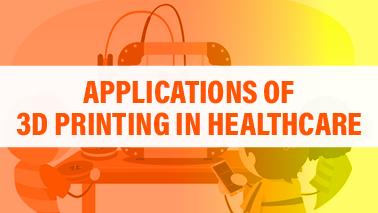
3D printing, also known as additive manufacturing, has made significant advancements in healthcare, revolutionizing various aspects of patient care, medical education, and research.
Some of the key applications and advancements include:
Patient-specific implants: 3D printing enables the creation of custom implants tailored to a patient's anatomy, leading to better outcomes in surgeries such as hip and knee replacements, cranial reconstructions, and dental implants.
Prosthetics and orthotics: 3D printing allows for the production of highly customized prosthetic limbs and orthotic devices, improving comfort and functionality for patients.
Surgical planning and guides: Surgeons can use 3D-printed models of a patient's anatomy for preoperative planning, enhancing the precision and safety of complex surgeries.
Tissue and organ printing: While still in the early stages of development, researchers are exploring 3D bioprinting to create tissues and organs for transplantation, drug testing, and disease modeling.
Pharmaceuticals: 3D printing is being used to fabricate personalized drug delivery systems, enabling customized dosages and drug release profiles tailored to individual patients.
Medical education and training: 3D-printed anatomical models are valuable tools for medical education, allowing students to visualize complex structures in a tangible way.
Dental applications: 3D printing is widely used in dentistry for the fabrication of crowns, bridges, and dental models, improving the accuracy and efficiency of dental procedures.
Point-of-care manufacturing: Hospitals and clinics can use 3D printing to produce medical devices and supplies on-site, reducing costs and lead times.
Advancements in 3D printing technology, such as improved materials, faster printing speeds, and increased resolution, continue to expand the possibilities for its use in healthcare. As the technology evolves, it is expected to play an even greater role in personalized medicine, regenerative medicine, and other areas of healthcare.
Tags
Computer-Aided Design Conferences
3D Printing Conferences Europe
Additive Manufacturing Conferences Europe
3D Modeling Conferences
Additive Manufacturing Conferences Japan
Additive Manufacturing Conferences
Additive Manufacturing Conferences Asia
3D Printing Conferences Singapore
3D Printing Conferences
3D Printing Conferences 2026 USA
3D Printing Conferences China
Material Extrusion Conferences
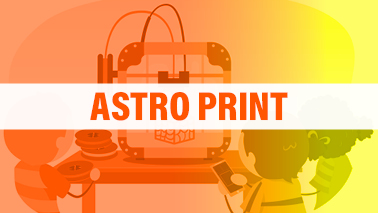
AstroPrint is a cloud-based platform that provides software solutions for 3D printing. Its primary aim is to streamline the 3D printing process, making it more accessible and user-friendly for both beginners and experts alike. Here are some advancements and features that AstroPrint has introduced:
Cloud Slicing: AstroPrint offers cloud-based slicing, which means users can prepare their 3D models for printing directly on the AstroPrint platform without needing to download additional software or plugins. This feature simplifies the workflow and reduces the need for powerful local hardware.
Remote Monitoring and Control: Users can monitor and control their 3D printers remotely through the AstroPrint platform. This feature enables users to check the progress of their prints, adjust settings, and even start or stop prints from anywhere with an internet connection.
Print Queues: AstroPrint allows users to create print queues, which are essentially lists of print jobs that are scheduled to be printed one after another. This feature is useful for managing multiple print jobs and optimizing printer utilization.
File Management: AstroPrint provides tools for organizing and managing 3D printable files. Users can upload, store, and organize their 3D models within the AstroPrint platform, making it easy to access and print them when needed.
Integration with 3D Printer Ecosystem: AstroPrint is compatible with a wide range of 3D printers, including popular brands such as Ultimaker, Prusa, MakerBot, and more. This compatibility allows users to easily connect their printers to the AstroPrint platform and take advantage of its features.
Community and Marketplace: AstroPrint has a vibrant community of users who share tips, tricks, and 3D printable designs. Additionally, AstroPrint offers a marketplace where users can discover and download 3D printable models created by other users.
Advanced Analytics: AstroPrint provides analytics and insights into 3D printing workflows, including print success rates, print times, material usage, and more. These analytics help users optimize their printing processes and improve efficiency.
Overall, AstroPrint continues to advance the field of 3D printing by providing innovative software solutions that simplify the printing process and empower users to unleash their creativity.
Tags
3D Printing Conferences 2026 USA
Additive Manufacturing Conferences 2026
3D Modeling Conferences
3D Printing Conferences 2026 Europe
3D Printing Conferences China
Computer-Aided Design Conferences
3D Printing Conferences Middle East
3D Printing Conferences Japan
3D Printing Conferences 2026
3D Printing Conferences Europe
3D Printing Conferences Asia
Additive Manufacturing Conferences Japan
3D Printing Conferences
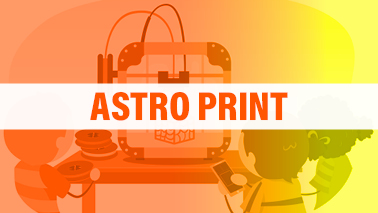
Bioprinting is an innovative technology that enables the creation of living tissues and organs using 3D printing techniques. It holds immense potential for regenerative medicine, drug discovery, and personalized medicine. Here are some key advancements in bioprinting:
Improved Printing Techniques: Bioprinting techniques have evolved to include various methods such as inkjet, extrusion, and laser-induced forward transfer, each offering unique advantages in terms of resolution, speed, and cell viability.
Bioinks: These are the materials used for bioprinting that consist of living cells embedded in a supportive gel. Advances in bioink formulations have led to the development of bioinks that mimic the natural extracellular matrix, providing a more conducive environment for cell growth and tissue development.
Vascularization: One of the major challenges in bioprinting is the ability to create vascular networks within printed tissues to supply nutrients and remove waste. Researchers have made significant progress in vascularization techniques, including the use of sacrificial materials and bioactive factors to promote the formation of blood vessels.
Organ-On-A-Chip: Bioprinting has enabled the development of organ-on-a-chip models, which are microfluidic devices that mimic the structure and function of human organs. These models are valuable for drug screening and disease modeling, offering a more accurate representation of human physiology compared to traditional cell culture models.
Clinical Applications: Bioprinted tissues and organs are being explored for a variety of clinical applications, including skin grafts, cartilage repair, and organ transplantation. While most applications are still in the early stages of development, some bioprinted products have already received regulatory approval for use in patients.
Integration with AI and Robotics: Advances in artificial intelligence and robotics are being integrated into bioprinting systems to improve precision, efficiency, and scalability. These technologies enable researchers to design complex tissues and organs with greater control and accuracy.
Overall, bioprinting holds great promise for revolutionizing healthcare by offering personalized, regenerative solutions for a wide range of medical conditions. However, there are still many challenges to overcome, including regulatory hurdles, scalability, and long-term safety and efficacy of bioprinted tissues and organs.
Tags
3D Printing Conferences 2026 USA
3D Modeling Conferences
Additive Manufacturing Conferences Europe
Additive Manufacturing Conferences
3D Printing Conferences Singapore
Additive Manufacturing Conferences USA
3D Printing Conferences 2026 Europe
Additive Manufacturing Conferences Japan
3D Printing Conferences Japan
3D Printing Conferences
3D Printing Conferences Middle East
Additive Manufacturing Conferences 2026
3D Printing Conferences Europe
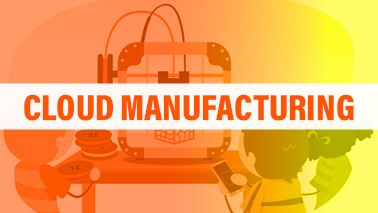
Cloud manufacturing is a manufacturing model that leverages cloud computing technologies to provide various manufacturing resources, such as software tools, simulation platforms, and manufacturing equipment, as services over the internet. This approach enables manufacturers to access and utilize manufacturing resources on-demand, paying only for what they use, similar to the software-as-a-service (SaaS) model.
Advancements in cloud manufacturing have been driven by several key factors:
Scalability: Cloud-based manufacturing platforms offer scalability, allowing manufacturers to easily scale their operations up or down based on demand without significant investments in infrastructure.
Flexibility: Cloud manufacturing provides flexibility in terms of resource allocation and utilization. Manufacturers can easily switch between different manufacturing resources and adapt to changing market conditions.
Cost-effectiveness: By outsourcing manufacturing resources to the cloud, companies can reduce capital expenditures on hardware and software infrastructure. They can also benefit from pay-per-use pricing models, which can lower overall manufacturing costs.
Collaboration: Cloud manufacturing platforms facilitate collaboration among different stakeholders in the manufacturing ecosystem, such as designers, engineers, suppliers, and customers. This collaboration can improve communication, coordination, and innovation across the supply chain.
Data-driven insights: Cloud manufacturing enables the collection and analysis of large volumes of manufacturing data, providing valuable insights into production processes, performance, and quality. This data-driven approach can help manufacturers optimize their operations and make more informed decisions.
Integration with emerging technologies: Cloud manufacturing platforms can easily integrate with emerging technologies such as artificial intelligence (AI), machine learning, internet of things (IoT), and augmented reality (AR). These technologies can enhance automation, predictive maintenance, and product customization in manufacturing processes.
Global reach: Cloud manufacturing allows manufacturers to access manufacturing resources from anywhere in the world with an internet connection. This global reach can facilitate outsourcing, offshoring, and distributed manufacturing strategies.
Overall, cloud manufacturing offers significant advantages in terms of agility, efficiency, and innovation, making it an increasingly attractive option for manufacturers looking to stay competitive in today's fast-paced and interconnected world.
Tags
Additive Manufacturing Conferences
3D Printing Conferences Japan
3D Printing Conferences Singapore
3D Printing Conferences China
Additive Manufacturing Conferences USA
Material Extrusion Conferences
3D Printing Conferences 2026
3D Printing Conferences Europe
Additive Manufacturing Conferences Asia
3D Printing Conferences Asia
Additive Manufacturing Conferences 2026
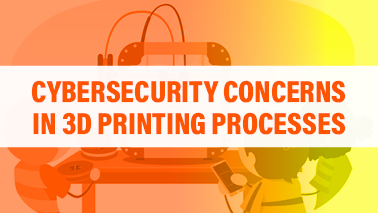
Cybersecurity in 3D printing is becoming increasingly important as the technology advances and becomes more widespread. Here are some key concerns and advancements in addressing them:
Data Security: One of the primary concerns in 3D printing is protecting the digital files used to create objects. Hackers could potentially access and manipulate these files, leading to the creation of faulty or malicious objects. Advancements in encryption techniques and secure file transfer protocols help mitigate this risk.
Integrity of Designs: Ensuring the integrity of designs throughout the printing process is crucial. Techniques such as digital signatures and blockchain technology can be used to verify the authenticity and origin of design files, reducing the risk of unauthorized modifications.
Network Security: As 3D printers become more connected to networks and the internet, they become vulnerable to cyber attacks. Securing these networks with firewalls, intrusion detection systems, and regular security updates is essential to prevent unauthorized access and data breaches.
Physical Security: Physical security of 3D printers is also important, as unauthorized access to the printing process could result in theft of intellectual property or sabotage. Implementing access controls and monitoring systems can help prevent such incidents.
Counterfeit Production: With the ability to easily replicate physical objects, 3D printing raises concerns about counterfeit production. Advancements in authentication technologies, such as embedded RFID tags or unique identifiers, can help distinguish genuine products from counterfeit ones.
Regulatory Compliance: Compliance with regulations and standards related to cybersecurity in 3D printing is essential for businesses operating in regulated industries such as aerospace, healthcare, and defense. Adhering to standards such as NIST SP 800-160 or ISO/IEC 27001 ensures that adequate cybersecurity measures are in place.
Cyber-Physical Attacks: 3D printers are vulnerable to cyber-physical attacks, where cyber intrusions affect the physical output. For instance, an attacker could manipulate the printing process to create defective or dangerous objects. Implementing real-time monitoring and anomaly detection systems can help detect and mitigate such attacks.
Supply Chain Security: Securing the entire 3D printing supply chain is critical to prevent vulnerabilities at any stage of production. This includes securing the transfer of design files, verifying the authenticity of raw materials, and ensuring the integrity of the printing process.
In response to these concerns, researchers and industry experts are continuously developing new cybersecurity solutions tailored to the unique challenges of 3D printing. These advancements include improved encryption algorithms, secure communication protocols, hardware-based security features, and sophisticated monitoring and detection systems. Additionally, collaborations between industry stakeholders, government agencies, and cybersecurity experts are essential to address emerging threats and establish best practices for securing 3D printing processes.
Tags
3D Printing Conferences 2026 Europe
3D Printing Conferences 2026 USA
Material Extrusion Conferences
3D Printing Conferences Asia
3D Printing Conferences China
3D Printing Conferences Europe
3D Printing Conferences 2026
3D Modeling Conferences
Additive Manufacturing Conferences 2026
Additive Manufacturing Conferences Asia
3D Printing Conferences Japan
Additive Manufacturing Conferences Europe
Additive Manufacturing Conferences Japan
3D Printing Conferences Middle East

Direct Energy Deposition (DED) is an additive manufacturing process that involves depositing a focused stream of molten metal or powder onto a substrate. This process is commonly used in industries such as aerospace, automotive, and defense for repairing or adding material to existing components, as well as for creating new parts.
Advancements in DED technology have focused on improving process control, precision, and the range of materials that can be used. Some key advancements include:
Improved Process Monitoring: Newer DED systems incorporate advanced sensors and monitoring techniques to provide real-time feedback on the deposition process. This helps ensure quality and consistency in the final part.
Enhanced Automation: Automation has been a major focus in advancing DED technology. This includes the integration of robotics and machine learning algorithms to automate the deposition process, leading to higher efficiency and productivity.
Multi-Material Deposition: DED systems are now capable of depositing multiple materials simultaneously, enabling the creation of complex parts with graded material properties.
In-situ Alloying: Some DED systems allow for the in-situ alloying of materials during deposition. This enables the creation of parts with customized material properties, such as improved strength or corrosion resistance.
Improved Surface Finish: Advancements in DED technology have led to improvements in surface finish, reducing the need for post-processing operations.
Integration with CAD/CAM Software: DED systems are now integrated with advanced CAD/CAM software, allowing for the direct translation of digital designs into physical parts with high accuracy.
Overall, these advancements have made DED a more versatile and efficient manufacturing process, with applications ranging from rapid prototyping to the repair and production of high-performance components.
Tags
Additive Manufacturing Conferences 2026
3D Printing Conferences 2026 Europe
3D Printing Conferences Singapore
3D Printing Conferences 2026
3D Printing Conferences Europe
3D Printing Conferences
Additive Manufacturing Conferences Japan
3D Printing Conferences Asia
Computer-Aided Design Conferences
Additive Manufacturing Conferences
Additive Manufacturing Conferences USA
3D Printing Conferences Middle East
3D Printing Conferences 2026 USA
3D Modeling Conferences
3D Printing Conferences Japan
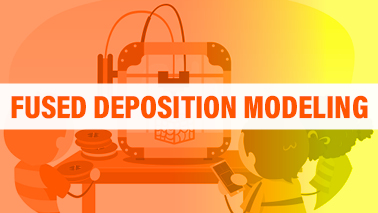
Fused Deposition Modeling (FDM) is a popular 3D printing technology that works by extruding thermoplastic material layer by layer to create objects. Here's a rundown of FDM and its advancements:
Basic FDM Process: In FDM, a filament of thermoplastic material is fed into a heated nozzle, where it melts. The melted material is then extruded onto a build platform, layer by layer, following a predetermined path to create the desired object.
Materials: FDM supports various thermoplastic materials, including PLA (Polylactic Acid), ABS (Acrylonitrile Butadiene Styrene), PETG (Polyethylene Terephthalate Glycol), and more. These materials offer different properties such as strength, flexibility, and heat resistance.
Advancements in Materials: Over time, advancements in FDM have led to the development of new materials with enhanced properties. For example, there are now filaments infused with carbon fiber or metal particles, which provide increased strength and durability.
Multi-Material Printing: Traditional FDM printers can typically only print with one material at a time. However, advancements in multi-material printing have enabled the creation of objects with multiple colors or properties in a single print job. This is achieved through either multiple extruders or specialized nozzle systems.
Improved Resolution and Speed: Technological advancements have also led to improvements in print resolution and speed. High-resolution FDM printers can produce objects with finer details, while faster printing speeds reduce the overall printing time.
Support Structures: One challenge in FDM printing is the need for support structures to prevent overhanging features from collapsing during printing. Advancements in support generation algorithms and soluble support materials have made it easier to print complex geometries with minimal post-processing.
Large-Scale Printing: While FDM printers were initially limited to relatively small build volumes, there are now printers capable of producing large-scale objects using FDM technology. These printers are used in various industries, including aerospace and automotive, for prototyping and manufacturing large parts.
Integration with Other Technologies: FDM has been integrated with other technologies such as CNC machining and robotic arms to create hybrid manufacturing systems. These systems combine the strengths of different fabrication methods to achieve complex geometries and improve efficiency.
Overall, FDM technology continues to evolve, with ongoing advancements pushing the boundaries of what is possible in terms of materials, print quality, speed, and scalability.
Tags
3D Printing Conferences Asia
Additive Manufacturing Conferences Japan
3D Printing Conferences 2026 Europe
3D Printing Conferences 2026 USA
3D Printing Conferences Japan
3D Modeling Conferences
Additive Manufacturing Conferences Europe
Additive Manufacturing Conferences 2026
3D Printing Conferences
Material Extrusion Conferences
Computer-Aided Design Conferences
3D Printing Conferences Middle East
Additive Manufacturing Conferences USA

Additive manufacturing, also known as 3D printing, continues to evolve rapidly, with several emerging trends and technologies shaping its future. Here are some key advancements to watch for:
Increased Material Options: While plastics are commonly used, the range of materials for 3D printing is expanding to include metals, ceramics, and composites. This broadens the potential applications of additive manufacturing across industries.
Multi-Material and Multi-Modal Printing: Advances in printing technology allow for the simultaneous use of different materials in a single print, enabling the creation of complex, multi-functional parts. Additionally, combining additive manufacturing with other fabrication techniques like CNC machining or injection molding (known as hybrid manufacturing) is becoming more prevalent.
Improved Speed and Efficiency: Innovations in printing processes, such as faster curing times, improved layering techniques, and increased automation, are reducing printing times and improving efficiency.
Digitalization and Industry 4.0 Integration: Additive manufacturing is increasingly integrated into digital production workflows, allowing for on-demand and distributed manufacturing. This integration is part of the broader trend towards Industry 4.0, where smart factories use digital technologies for greater automation and data exchange.
Advances in 3D Printing Software: Software is evolving to better support the design and optimization of 3D-printed parts. This includes better simulation tools for predicting part behavior and optimizing printing parameters, as well as software for creating complex geometries that are difficult to manufacture using traditional methods
Bioprinting and Tissue Engineering: In the medical field, bioprinting is advancing, allowing for the creation of tissues and organs for transplantation and drug testing. This area holds great promise for personalized medicine and regenerative therapies.
Sustainability and Recycling: As concerns about environmental impact grow, there is a focus on developing more sustainable materials for 3D printing, as well as on recycling and reusing printed parts and waste materials.
Space and Aerospace Applications: Additive manufacturing is increasingly used in the aerospace industry for lightweight, complex parts. As the technology improves, it has the potential to revolutionize space exploration by enabling the fabrication of parts and structures in space, reducing the need to transport them from Earth.
Nano and Microscale Printing: Advancements in printing at the nano and microscale are opening up new possibilities in fields like electronics, photonics, and medicine, where precise, small-scale structures are needed.
These trends and advancements in additive manufacturing are driving innovation across industries, leading to more efficient production processes, new product designs, and breakthroughs in areas like medicine and aerospace.
Tags
3D Printing Conferences Asia
Material Extrusion Conferences
3D Printing Conferences Japan
3D Modeling Conferences
3D Printing Conferences Europe
3D Printing Conferences 2026 Europe
Additive Manufacturing Conferences Europe
3D Printing Conferences 2026 USA
Additive Manufacturing Conferences
Additive Manufacturing Conferences USA
Computer-Aided Design Conferences
3D Printing Conferences China
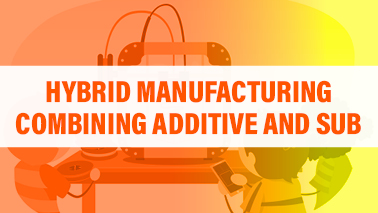
Hybrid manufacturing, which integrates additive manufacturing (AM) and subtractive manufacturing techniques, has gained significant attention due to its ability to leverage the advantages of both processes. Here's an overview of its advancements:
Improved Material Properties: One of the significant advancements in hybrid manufacturing is the ability to produce parts with improved material properties. By combining AM and subtractive techniques, manufacturers can create complex geometries using AM and then refine them using subtractive processes to achieve desired surface finishes and mechanical properties.
Enhanced Efficiency: Hybrid manufacturing offers increased efficiency compared to using either AM or subtractive manufacturing alone. It enables manufacturers to optimize the use of materials and reduce waste by selectively adding material only where needed while removing excess material through subtractive techniques.
Multi-Material Capability: Advances in hybrid manufacturing have enabled the integration of multiple materials within the same part. This capability allows for the creation of complex, multi-functional components with varying material properties, such as combining metals with ceramics or polymers within a single part.
In-situ Monitoring and Control: Another significant advancement is the development of in-situ monitoring and control systems that enable real-time quality assurance during the hybrid manufacturing process. These systems utilize sensors and feedback mechanisms to monitor parameters such as temperature, porosity, and dimensional accuracy, allowing for adjustments to be made on-the-fly to ensure consistent part quality.
Hybrid Machine Tools: The emergence of hybrid machine tools, capable of performing both additive and subtractive processes in a single setup, has been a major advancement in hybrid manufacturing. These machines offer increased flexibility and productivity by eliminating the need for separate setups and transitions between AM and subtractive processes.
Customization and Personalization: Hybrid manufacturing facilitates customization and personalization of parts by enabling the integration of AM for producing unique geometries or features tailored to specific requirements, combined with subtractive techniques for precision machining and finishing.
Integration with Industry 4.0: Hybrid manufacturing is being integrated into Industry 4.0 initiatives, leveraging technologies such as artificial intelligence, machine learning, and digital twins to optimize process parameters, predict maintenance needs, and improve overall efficiency and productivity.
Overall, the advancements in hybrid manufacturing are driving innovation across various industries, from aerospace and automotive to healthcare and consumer goods, by offering new capabilities for producing complex, high-performance parts with greater efficiency and customization.
Tags
3D Printing Conferences Asia
Additive Manufacturing Conferences Europe
3D Printing Conferences Middle East
3D Printing Conferences Japan
Additive Manufacturing Conferences Japan
3D Printing Conferences 2026 Europe
Computer-Aided Design Conferences
Additive Manufacturing Conferences USA
3D Printing Conferences Europe
3D Modeling Conferences
3D Printing Conferences
3D Printing Conferences China
Additive Manufacturing Conferences 2026
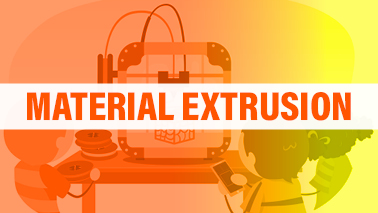
Material extrusion, also known as fused deposition modeling (FDM) or fused filament fabrication (FFF), is a popular 3D printing technology where thermoplastic filaments are melted and extruded layer by layer to create a three-dimensional object.
Advancements in material extrusion have been significant and continue to evolve, improving both the quality and range of applications. Here are some notable advancements:
Improved Materials: Initially, ABS and PLA were the primary materials used in FDM. Now, there's a wide range of thermoplastics available, including PETG, nylon, polycarbonate, TPU (flexible filament), and even composites with materials like carbon fiber or metal particles. These materials offer various properties such as strength, flexibility, heat resistance, and chemical resistance.
High-Performance Polymers: Advancements have led to the development of high-performance polymers suitable for material extrusion, including PEEK (Polyether Ether Ketone), PEI (Polyetherimide), and ULTEM™ (a type of PEI). These materials are used in aerospace, automotive, and medical industries due to their excellent mechanical properties and chemical resistance.
Multi-Material Printing: Some FDM printers now support multi-material printing, allowing the use of different filaments within the same print. This capability enables the creation of complex and functional parts with varying properties.
Support Material Advances: Breakaway and dissolvable support materials have been developed to make post-processing easier for complex geometries. Dissolvable supports, in particular, enable printing of intricate designs without manual removal, as the support material dissolves in a specific solvent.
Large-Scale Printing: The size of FDM printers has increased, allowing for the fabrication of larger objects. This advancement opens up opportunities for architectural prototypes, furniture, and even construction components.
Continuous Fiber Reinforcement: Some FDM printers can now integrate continuous fiber reinforcement into prints, enhancing structural integrity and enabling the creation of lightweight yet strong parts. This technology combines thermoplastic filament with continuous strands of carbon fiber, fiberglass, or Kevlar during the printing process.
Improved Resolution and Surface Finish: Advancements in nozzle design and motion control systems have led to improved print resolution and surface finish. Smaller layer heights and finer nozzle diameters enable the production of smoother, more detailed parts.
Advanced Software and Firmware: Software and firmware improvements have enhanced the user experience and print quality. Features such as auto bed leveling, adaptive layering, and improved slicing algorithms optimize print settings for better results.
Overall, these advancements have expanded the capabilities of material extrusion, making it a versatile and widely used 3D printing technology across various industries.
Tags
Additive Manufacturing Conferences Europe
3D Printing Conferences Middle East
Additive Manufacturing Conferences 2026
Additive Manufacturing Conferences USA
3D Printing Conferences
Additive Manufacturing Conferences Japan
3D Printing Conferences Singapore
3D Printing Conferences Japan
Additive Manufacturing Conferences Asia
3D Modeling Conferences
Additive Manufacturing Conferences
Computer-Aided Design Conferences
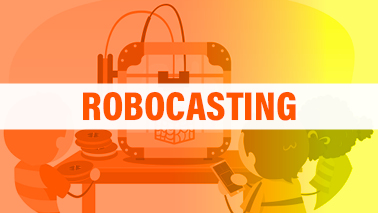
Robocasting, also known as direct ink writing or 3D printing with paste, is an additive manufacturing technique that allows for the precise deposition of materials to create complex structures layer by layer. It's often used in the fabrication of ceramics, composites, and other materials where traditional 3D printing methods may not be suitable.
Advancements in robocasting have been significant in recent years, with researchers and industry innovators exploring new materials and applications. Some key advancements include:
Material Development: Researchers have been working on developing new materials suitable for robocasting, including biocompatible ceramics for medical applications, high-strength composites for aerospace, and conductive materials for electronics.
Multi-material Printing: Advancements have enabled the printing of structures with multiple materials in a single process, allowing for the creation of complex, multi-functional parts.
High-resolution Printing: Improvements in printing technologies have led to higher resolution prints, allowing for the creation of intricate structures with fine details.
In-situ Monitoring and Control: Robocasting systems are now equipped with sensors and monitoring tools to control the printing process in real-time, ensuring quality and consistency.
Scale-up and Industrial Applications: Robocasting is being scaled up for industrial applications, such as the fabrication of large-scale components for the aerospace and defense industries.
Integration with Other Technologies: Robocasting is being integrated with other technologies, such as robotics and artificial intelligence, to further enhance its capabilities and applications.
These advancements in robocasting are driving innovation in various industries, including healthcare, aerospace, electronics, and more, enabling the fabrication of complex structures with improved performance and functionality.
Tags
3D Printing Conferences Middle East
3D Printing Conferences China
Additive Manufacturing Conferences
3D Printing Conferences 2026
3D Printing Conferences Singapore
Additive Manufacturing Conferences 2026
Additive Manufacturing Conferences Japan
Material Extrusion Conferences
3D Printing Conferences 2026 USA
Additive Manufacturing Conferences Asia
Additive Manufacturing Conferences USA
Additive Manufacturing Conferences Europe
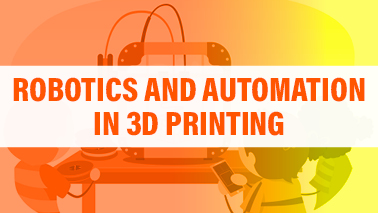
Robotics and automation have significantly impacted the field of 3D printing, leading to advancements in speed, precision, and complexity of printed objects. Here are some key areas where robotics and automation have been influential:
Print Bed Leveling: Automated systems can adjust the print bed to ensure that the first layer adheres properly, crucial for print quality.
Material Handling: Robots can handle filament spools, powders, or liquid resin, ensuring a continuous feed to the printer without human intervention.
Print Head Movement: Precision robotic arms can control the movement of the print head with high accuracy, allowing for complex geometries and intricate designs.
Multiple Print Heads: Automation enables the use of multiple print heads, each with different materials or colors, expanding the possibilities in 3D printing.
Post-Processing: Robots can perform post-processing tasks like support removal, sanding, or painting, streamlining the production process.
Quality Control: Automated systems can inspect printed objects using cameras or sensors, ensuring they meet quality standards.
Customization and Mass Production: Automation enables the customization of each printed object without the need to reconfigure machines, making mass customization feasible.
AI and Machine Learning: These technologies are being used to optimize print parameters, predict print failures, and enhance overall print quality.
Sustainability: Automation can optimize material usage, reducing waste, and energy consumption, making 3D printing more environmentally friendly.
Medical and Bioprinting: Robotics and automation are crucial in the field of medical 3D printing, where precision and sterile conditions are paramount.
Overall, robotics and automation have revolutionized 3D printing, making it faster, more reliable, and capable of producing complex objects that were once difficult or impossible to create.
Tags
Additive Manufacturing Conferences 2026
3D Printing Conferences 2026 Europe
3D Printing Conferences 2026 USA
3D Printing Conferences China
3D Printing Conferences Japan
3D Printing Conferences Asia
Material Extrusion Conferences
Additive Manufacturing Conferences
3D Printing Conferences
3D Printing Conferences 2026
3D Modeling Conferences
Additive Manufacturing Conferences Europe
Additive Manufacturing Conferences Japan
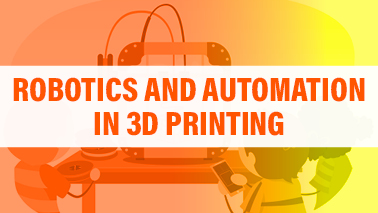
Selective Laser Melting (SLM) is an additive manufacturing technique, often referred to as 3D printing, that utilizes a high-powered laser to selectively melt and fuse metallic powders layer by layer to create complex three-dimensional parts. Here are some advancements and key aspects of SLM:
Increased Precision: Advancements in laser technology and control systems have improved the precision of SLM, allowing for the creation of intricate geometries and fine details.
Material Variety: Initially, SLM was primarily used for processing metals like titanium, stainless steel, and aluminum. However, advancements have expanded the range of materials compatible with SLM to include ceramics and even certain types of polymers.
Multi-Material Printing: Some SLM systems now have the capability to print with multiple materials simultaneously, enabling the creation of hybrid parts with varying material properties.
Improved Surface Finish: Enhancements in powder quality, process parameters, and post-processing techniques have led to smoother surface finishes, reducing the need for additional finishing operations.
In-situ Monitoring and Control: Real-time monitoring and control systems have been developed to optimize the SLM process parameters, ensuring consistent part quality and minimizing defects.
Topology Optimization: Software tools for topology optimization have become more sophisticated, allowing engineers to design parts specifically optimized for SLM manufacturing, resulting in lighter and more efficient structures.
Integration with CAD/CAM Systems: Integration with computer-aided design (CAD) and computer-aided manufacturing (CAM) software has streamlined the SLM workflow, making it easier for designers to create and optimize parts for additive manufacturing.
High-Temperature Applications: SLM has been increasingly used for manufacturing components for high-temperature applications such as aerospace and automotive engines, where materials like nickel-based superalloys and refractory metals are required.
Medical and Dental Applications: SLM is also making strides in the medical and dental fields, where it is used to fabricate custom implants, prosthetics, and dental restorations with high precision and biocompatibility.
Post-Processing Innovations: Advances in post-processing techniques, such as hot isostatic pressing (HIP) and surface treatments, have improved the mechanical properties and surface finish of SLM parts, making them suitable for a wider range of applications.
Overall, these advancements in Selective Laser Melting technology have expanded its capabilities and made it a viable manufacturing method for producing complex, high-performance parts across various industries.
Tags
Material Extrusion Conferences
Additive Manufacturing Conferences 2026
Additive Manufacturing Conferences
3D Printing Conferences Asia
3D Printing Conferences
3D Printing Conferences 2026 USA
3D Modeling Conferences
Additive Manufacturing Conferences Europe
Additive Manufacturing Conferences Asia
3D Printing Conferences Japan
Additive Manufacturing Conferences Japan
3D Printing Conferences 2026
3D Printing Conferences China
3D Printing Conferences 2026 Europe
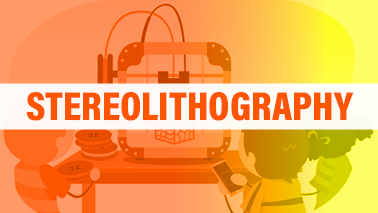
Stereolithography (SLA) is a 3D printing technology that uses a laser to cure liquid resin into solid layers, creating intricate and precise 3D objects. Since its invention in the 1980s, SLA has undergone significant advancements, improving speed, resolution, and material capabilities. Here are some key advancements:
Speed: Early SLA printers were relatively slow, as the laser had to trace each layer individually. However, advancements in laser technology and scanning methods have greatly increased printing speeds. High-speed SLA printers can now produce complex parts in a fraction of the time compared to earlier models.
Resolution: Improvements in laser precision and control mechanisms have led to higher resolution in SLA printing. This means finer details and smoother surfaces can be achieved, making SLA suitable for producing intricate prototypes and end-use parts with high surface quality.
Materials: Initially, SLA was limited to a few types of photopolymer resins. However, the range of materials compatible with SLA has expanded significantly. There are now resins available with varying properties such as flexibility, transparency, heat resistance, and biocompatibility, catering to a wide range of applications from engineering prototypes to medical devices.
Large-scale printing: While SLA printers traditionally produced relatively small objects, advancements have enabled the development of larger SLA machines capable of printing objects on a larger scale. This opens up new possibilities for producing bigger parts and prototypes.
Multi-material printing: Some SLA printers now support multi-material printing, allowing for the creation of objects with different material properties in a single print. This capability is useful for producing complex parts with varying characteristics or for incorporating features like overmolding.
Integration with other technologies: SLA has been integrated with other manufacturing technologies such as CNC machining and injection molding to create hybrid manufacturing systems. These systems leverage the strengths of each technology to optimize production processes and produce parts with improved efficiency and quality.
These advancements in stereolithography have made it a versatile and widely used 3D printing technology in various industries including automotive, aerospace, healthcare, and consumer goods. As research and development continue, we can expect further innovations in SLA technology, pushing the boundaries of what is possible in additive manufacturing.
Tags
3D Printing Conferences 2026 USA
3D Printing Conferences Europe
Material Extrusion Conferences
Additive Manufacturing Conferences Asia
Additive Manufacturing Conferences Europe
3D Modeling Conferences
3D Printing Conferences Japan
3D Printing Conferences
3D Printing Conferences 2026 Europe
Additive Manufacturing Conferences Japan
Computer-Aided Design Conferences
Additive Manufacturing Conferences
3D Printing Conferences Singapore
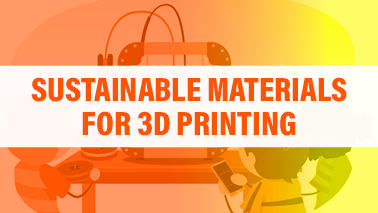
Sustainable materials for 3D printing are becoming increasingly popular as the technology matures and environmental concerns grow. Here are some key advancements and materials in this area:
Bioplastics: These are derived from renewable biomass sources such as corn starch, tapioca roots, or sugarcane. They are biodegradable and compostable, making them environmentally friendly alternatives to traditional plastics.
Recycled plastics: Filaments made from recycled PET bottles or other post-consumer plastics can be used for 3D printing. This helps reduce waste and promotes a circular economy.
Plant-based resins: Resins derived from plants like soybeans or algae can be used for stereolithography (SLA) or digital light processing (DLP) 3D printing, offering biodegradable and renewable alternatives to petroleum-based resins.
Hemp-based materials: Hemp fibers can be combined with PLA (polylactic acid) to create a stronger and more sustainable filament for 3D printing.
Wood-based filaments: These filaments contain a mixture of recycled wood fibers and PLA, creating a material that mimics the appearance and texture of wood.
Recycled metal powders: Metal powders reclaimed from industrial processes can be used in metal 3D printing, reducing the need for virgin materials.
Advancements in sustainable materials for 3D printing include improved material properties, better printability, and increased availability of filaments and resins. Researchers and manufacturers are also exploring new sources of sustainable materials, such as agricultural waste, to further expand the range of eco-friendly options for 3D printing.
Tags
3D Printing Conferences Japan
Additive Manufacturing Conferences Asia
3D Printing Conferences Europe
Additive Manufacturing Conferences 2026
3D Printing Conferences Asia
3D Printing Conferences Middle East
3D Printing Conferences Singapore
Additive Manufacturing Conferences Europe
3D Printing Conferences
3D Printing Conferences 2026 USA
Additive Manufacturing Conferences Japan
Computer-Aided Design Conferences
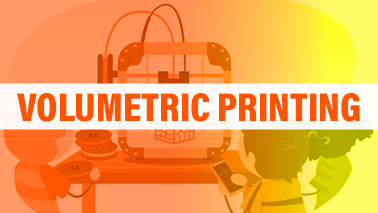
Volumetric printing is an emerging technology that allows for the creation of 3D objects with full-color and high-resolution details. Unlike traditional 3D printing, which builds objects layer by layer, volumetric printing creates objects by solidifying voxels (three-dimensional pixels) within a photosensitive resin. This process enables the printing of complex shapes and intricate designs with greater speed and accuracy.
Advancements in volumetric printing are focused on improving speed, resolution, color accuracy, and material options. Some of the recent advancements include:
Increased Speed: New techniques and hardware improvements have led to faster printing speeds, allowing for the creation of larger objects in less time.
Higher Resolution: Advances in optics and software algorithms have improved the resolution of volumetric printing, resulting in finer details and smoother surfaces on printed objects.
Color Accuracy: Improved color mixing and control mechanisms have enhanced the color accuracy of volumetric printing, enabling the creation of objects with vibrant and realistic colors.
Material Options: Researchers are exploring new materials that can be used in volumetric printing, including biodegradable resins and materials with special properties like conductivity or flexibility.
Multi-material Printing: Some advancements enable the printing of objects with multiple materials in a single print, allowing for the creation of complex and functional objects.
Applications: Volumetric printing is finding applications in various industries, including healthcare (for printing medical models and implants), architecture (for creating detailed architectural models), and entertainment (for producing custom figurines and collectibles).
Overall, the advancements in volumetric printing are making it a promising technology for creating highly detailed and customized 3D objects with a wide range of applications.
Tags
3D Printing Conferences Asia
3D Printing Conferences Europe
3D Printing Conferences
Additive Manufacturing Conferences Europe
Additive Manufacturing Conferences Japan
3D Printing Conferences Middle East
3D Printing Conferences 2026 USA
3D Printing Conferences 2026 Europe
3D Printing Conferences Japan
Additive Manufacturing Conferences
Additive Manufacturing Conferences Asia
3D Modeling Conferences
Market Analysis:
3D Printing Market Overview in USA:
The global market for 3D printing reached a value of USD 22.39 billion in 2023 and is anticipated to reach USD 27.52 billion in 2024, with a projected growth to USD 150.20 billion by 2032, reflecting a CAGR of 23.6% during the forecast period. The rapid advancement of digitization and the increasing adoption of cutting-edge technologies such as smart factories, Industry 4.0, machine learning, and robotics are driving the demand for online 3D printing in simulation applications. This technology finds extensive application across various industries including automotive, aerospace, healthcare, and more. For example, aerospace companies like Boeing are utilizing industrial 3D printing for manufacturing interior parts of aircraft, while NASA employs it for constructing rocket engines and satellite components. Similarly, the automotive sector is witnessing significant adoption, with rapid tooling and additive manufacturing being prioritized by manufacturers. Moreover, customization of automotive interiors is emerging as a major application of 3D printing in this industry.
Advancements in 3D hardware and software are expected to generate new revenue streams for market players, with tech-savvy startups and established companies focusing on upgrading and developing innovative technologies. Polymer printers, particularly Fused Filament Fabrication (FFF) and powder bed fusion technologies, are gaining traction due to their ability to facilitate high-volume manufacturing and enhance productivity. Furthermore, developments in resin-based technologies like Digital Light Processing (DLP) and Stereolithography (SLA) are anticipated to cater to the dental and consumer goods industries.
Additionally, there is a growing demand for software solutions that streamline operations and enhance additive manufacturing processes. Automation across the 3D printing workflow, high-performance material development, adoption of large-format systems in metal 3D printing, reliability across technologies, and the expansion of 3D printing into existing and new markets are among the key trends shaping the industry.
Factors Driving Growth in the 3D Printing Market
Governments and tech giants worldwide are making substantial investments to propel market expansion. In the United States, the Department of Defense recognized 3D printing as a crucial capability in its budget, signaling its significance in advanced manufacturing. Tech giants like Autodesk, Microsoft, and HP have also entered the additive manufacturing arena with dedicated products. Similarly, China is actively investing in research and development to enhance its manufacturing competitiveness globally. The country views 3D printing as both a risk and an opportunity, leading to increased R&D efforts in this field. In India, government initiatives like Make in India are driving the adoption of 3D printing, evident in partnerships between companies like India Cements and 3D printing startups. Korea has charted an independent roadmap for 3D printing R&D, backed by national support and incentives. The Korean government aims to accelerate industry adoption through regulatory agreements and tax incentives. Meanwhile, the UK's 3D technology strategy faces uncertainties amid Brexit, while Germany is poised to leverage its well-established Industry 4.0 infrastructure to redefine its approach to 3D printing. According to the 3D Printing Trend Report 2022 by HUBS, 3D printing offers resilience in global crises like climate change and the COVID-19 pandemic. It enhances manufacturing sustainability and aligns with environmental goals. As the market matures, 3D printing will play an increasingly vital role in manufacturing processes, from prototyping to end-use applications, fostering innovation and efficiency.
3D Printing Market Insights in Europe:
As of 2024, the Europe 3D Printing Market is approximated to be valued at USD 6 billion, with a projected expansion that anticipates reaching USD 11.54 billion by 2029. This growth trajectory is underlined by a CAGR of 14% during the forecast period spanning from 2024 to 2029. Europe stands out as a significant hub for 3D printing technology, playing a pivotal role in the global landscape.
3D Printing Market Insights in Asia:
Since its inception in the early 1980s, 3D printing technology has undergone a transformative journey within the manufacturing landscape. In recent years, it has transcended the initial household hype, evolving from a consumer-oriented novelty to a widely applied industrial manufacturing process. The developments witnessed in the industry during 2021 and 2022 signal a pivotal moment, positioning 3D printing to transcend its traditional role in functional prototyping and emerge as a practical solution for end-use parts and serial production.
The widespread adoption of 3D printing has now reached a critical mass, with a paradigm shift evident as it becomes an integral part of numerous supply chains. Those who have yet to incorporate additive manufacturing into their processes are increasingly finding themselves in a diminishing minority. The technology, often referred to as Additive Manufacturing (AM), currently stands at a technological and economic inflection point, poised to redefine and disrupt the trillion-dollar global manufacturing sector.
This evolution underscores the growing maturity and acceptance of 3D printing as a viable and efficient means of production, paving the way for its expanded role in reshaping the future of manufacturing on both technological and economic fronts.
3D Printing Market Insights in Asia-Pacific:
The Asia-Pacific 3D printing market is anticipated to reach an estimated value of $29,335.90 million by the year 2032, exhibiting a robust CAGR of 19.19% throughout the forecast period from 2023 to 2032.
The region's prominence in the global manufacturing landscape is well-established, with Asian countries renowned for their cost-effective solutions and extensive manufacturing capabilities. This reputation has attracted numerous businesses seeking strategic expansion to capitalize on these advantages. The proactive approach of companies establishing their operations in the region is underpinned by the desire to tap into the cost-effectiveness and vast production capabilities prevalent in Asia.
Furthermore, the Asia-Pacific 3D printing market benefits significantly from the active participation of key market players in the region. These participants not only contribute to the market's growth but also play a pivotal role in driving technological innovations and advancements. The continuous progress and innovations introduced by these market players enhance the overall potential for growth within the 3D printing industry in the Asia-Pacific region.
As the region continues to evolve as a hub for cost-effective and technologically progressive manufacturing, the Asia-Pacific 3D printing market is poised for promising growth. The combination of strategic business expansion, technological innovation, and the inherent advantages of the Asian manufacturing landscape positions the region as a key player in the global 3D printing industry.
3D Printing Market Insights in Middle East:
The Middle East 3D printing materials market is poised for substantial growth, with an anticipated CAGR of 16.7% and a corresponding CAGR of 11.2% in volume during the forecast period. This projection underscores the region's increasing significance in the global 3D printing materials landscape.
The adoption of 3D printing materials is experiencing a notable surge on a global scale, with a distinct shift towards burgeoning markets in developing regions. Notably, the Middle East is emerging as a focal point for this growth trend, witnessing a remarkable uptick in the utilization of 3D printing materials.
Over the past few years, the Middle East has seen the establishment of various 3D printing manufacturing companies, indicative of the region's commitment to embracing and harnessing this innovative technology. This trend is anticipated to persist over the next decade, driven by the accessibility of cost-effective raw materials and the concurrent increase in manufacturing output within these Middle Eastern regions.
The convergence of favorable factors, including the availability of affordable raw materials and an escalating manufacturing output, positions the Middle East as a key player in the global 3D printing materials market. As the region continues to foster a conducive environment for 3D printing innovations and manufacturing, the Middle East is poised to play an instrumental role in shaping the trajectory of the 3D printing materials industry over the coming years.
Top 100 3D Printing Companies in USA:
Munchkin, Inc. | Relativity Space | Formlabs | Markforged | Scanifly | Seurat Technologies | Fenner Precision Polymers | Koh Young Technology | Desktop Metal | Freeform | Vast | Adaptive 3D | Glowforge | Fictiv | Axiom Custom Products | Dassault Systemes | Divergent | Aether Biomachines | GPRS | Mugwump Productions | 3 DPX | 3 Space | 3D Accuracy LLC | 3D Brooklyn | 3D Central | 3D Chimera | 3D Figure works | 3D Ground | 3D Herndon | 3D Hubs | 3D Material Technologies | 3D Matter | 3D Parts Manufacturing | 3D Parts Unlimited | 3D Print Everything | 3D Print Texas | 3D Print The Future | 3D Printed MicroTEC | 3D Printing Chicago | 3D printing Store | 3D Printing Tech |3D Prints On Demand | 3D Printsmith | 3D Rapid Parts | 3D Shoes | 3D Solutions, Inc | 3D Systems | 3Dallas Printing | 3DBEAN | 3D-CAM | 3DEO | 3Diligent | 3DX Industries | 3rd Dimension Industrial 3D Printing | ABC Imaging | Addaero | Additive Manufacturing | Additive Manufacturing LLC | Additive Manufacturing Technologies | Advanced Solutions | AdvancedTek | Advantage Litho | All About 3D Printing | Altair Engineering | American Additive Manufacturing | American Cladding | Archematerial | Armatron Systems | Arris Composites | Arrival 3D | ARRK | Assemby l 3D Printing | Atypical Products | Auxetic | B9Creations | Baked 3D | Bastech | Beckatt Solutions | Becker | Big Tech | Bluedge | Branch Technology | Btec 3D | Build Parts | Burton Precision | CadPrintWax | Cadspan | Cam Logic | Camlogic | Capital 3d | Car Parts by 3D Printing | Carbon 3D | Carpenter Additive | Castheon | Ceramco | Cincinnati | CoKreeate | Computer Aided Technology | Cosine Additive Inc | Creative 3D | Custom Color 3d | Deezmaker | Delux Engineering | Design Point | Detroit 3D | Dimension Works | Dinsmore | Dinsmore Inc. | Divmfg tech | Doob 3D | Dura-Metal | eCadCam | Electroimpact | Elite Additive | Emerging Objects | Engatech | Eoplex | Evnzee | Exone | FABBERZ | Fabrisonic | Famaero | Fast Radius | Fathom | Fictiv |
Top 100 3D Printing Companies in Europe:
prontotype e.K. | ALL.RAPID D-Druck & Design | RAYLASE AG | Membino GmbH | Multec GmbH | digitectum, marc bescher | Freeform4U GmbH | topmodellfabrik GmbH | Fabrica GmbH | alphacam GmbH | tobaTEC GmbH & Co. KG | Trindo Digitalmanufaktur GmbH | Additive Elements GmbH | Rapidobject GmbH | Fabb-It UG | rw-3d Druckwerk GmbH | Speedpart GmbH | 3D Manufaktur Seevetal | CHH IT Solutions GmbH | Konrad Rauh | Kühling & Kühling GmbH | BigRep GmbH | Construcion Zone GmbH | electronic things GmbH | F & B rapid production GmbH | German RepRap GmbH | NEXTDynamics Ldt | Copynet Innovationsgesellschaft mbH | WDS Software &Service GmbH | voxeljet AG | ayxesis GmbH | PICCO´s 3D World GmbH | 4D Concepts GmbH | Lothar Galgenmüller | Wenger & Krautwasser GbR | Apium Additive Technologies GmbH | ArcTron 3D Vermessungstechnik & Softwareentwicklungs GmbH | ABOUT 3D UG | encee CAD/CAM Systeme GmbH | Sandhelden GmbH & Co. KG | CADCOMMUNICATION. EK | VisioTech GmbH | Printer Care Service GmbH | KISTERS AG | Herz GmbH | CINTEG AG | Kevin Neugebauer | Stefan Reinsprecht—stebdesign | filamentworld | metallpulver24 | Materials Consulting Dr.-Ing. Beate Heisterkamp | Rolf Lenk Werkzeug- und Maschinenbau GmbH | Fr. Aussieker Metallverarbeitung GmbH & Co. KG | CAST SOLUT Sales and Service GmbH vioproto.de | C.F.K. CNC-Fertigungstechnik Kriftel GmbH | bkl-lasertechnik | TLS Technik GmbH & Co Spezialpulver KG | ENGINEERING FOR YOU GmbH | PyroPowders.de | Reinhold Bürosysteme GmbH | 3D-Laserdruck GbR | Lapro GmbH | Material 4 Print GmbH & Co. KG | MediaCom-IT Distribution GmbH | DAS FILAMENT | Prototec GmbH & Co. KG | MBFZ toolcraft GmbH | Hawener 3D GmbH | Mark3d GmbH | pro3D GmbH & Co. KG | Solling-CAD solling-cad.de | ReaLizer GmbH | CRDREI GmbH | fabtory fabtory.de | CP—Centrum für Prototypenbau GmbH | Makerlounge 3D-Studio | simufact engineering gmbh | Kevin Neugebauer | iGo3D GmbH | rioprinto UG | 3DXXL | Napoli-Design | marhellabs | ArchiKonstrukt | Project 3D GmbH | Roman Hölz | 3D4real 3D Druck | XTRUDR UG (haftungsbeschränkt) | Marin Mihatov printit-3d.de | MüSys 3D Druck muesys-3d-druck.de | Jens Hevike mannheim-3d-druck.de | 3D Activation GmbH | ProTec3D | Riesen Consulting riesen-consulting.de | MakeBox makebox.de | On wire e-business GmbH | Andreas Einsiedel und Philipp Hofmann GbR | CUBER 3D-Drucker | 3D-Printwerk | Pryo3D | Christian Etzold und Stefan Seifert GbR |
Top 100 3D Printing Companies in Asia:
XYZprinting | Beijing Tiertime Technology Co., Ltd. | Shining 3D | Flashforge | Anycubic | Farsoon Technologies UnionTech | InssTek | Sindoh | Tumaker | CreatBot | Winbo Smart Tech Co., Ltd. | Aurarum | Mutoh Ricoh | Leapfrog 3D Printers | Robo 3D | Mankati | Huashu | TierTime | Jampt | Protolabs | Solize | Instalimb | Kabuku | 3 D Printing Corporation | DaNippon Printing | Fuji Xerox | Chiyoda Gravure Corporation | Fasotec | Dgshape | Altera Japan | Kayo Printing | Technical Light | 3ERP | BLT | Facfox | Falcontech | HLH Prototypes Co LTD | Lava | Rapid Direct | Rapiddirect | RP World | Shanghai Digital Manufacturing (SHDM) | Star Rapid | Start Prototyping | Voxelijet | Winsun | ZRapid | 3D Metal Forge | 3D Print Singapore | 3DPS LLP | Hamilton Labs | Namic | Pan Delta Controls | PrintmyCAD | Zelta 3d | Maliev Co., Ltd. | Digital –can | Advanced Biomedical Technology | Sandraw | Expert 3D | Pebblereka | 3 Digi Print | 3 Digi Print | 3D Dream Box | 3D Eology | 3D Eometry | 3D For u | 3D printing Service | 3D Spectra Tech | 3D Yug | 3Deometry Innovations LLP | 3Deye 3D Printing | 3Ding | 3DPD | 3d-Printer Machine | 3dWalla | 3idea | Addere Creations | Akaar | Amace solutions | Anatomiz 3D Medtech Private Limited | Aryan-3d Printing | AToa | Auto Abode | Boson machines | Botzlab Innovations & Services | Brahm Works | Cadcam Professionals | Carbon 3D Labs India | Creative Grip | Creative Grip - 3D Printing Service | Daava Group | Designifying | DesignTech | DF3D | Digifabb | Engineering Technique | Fabforma Technologies | Foxy Creative | Fracktal Works | Garuda 3D | Global 3D LABS | IamRapid | iKix 3D Prints Pvt. Ltd. | Imaging 3D print | Incredible | Indus 3D Printers | Innovae 3D | Instapro 3D | Intech Additive Solutions | Invihub Technosolutions | KadKraft | KKROBOTIC | Make whale | Makenica Inc | Melting Mints | Meta Morph | Morphedo | Novabeans | Objectify Additive Manufacturing | Precious 3D | PrintmyCAD | Printomake | Protofab | Rapid DMLS | Rapid3Dtechnologies | Realiz 3D - 3D Printing | Reshape Ideas | SAHAS Softech | SKYCAD | Soch 3D | The 3D Printers | Think 3D | Time To 3D | Trikolaa Tech | vb4u | Vexmatech | Vishwakarma 3d Printing | VOiLA3D | Voxelijet | Wipro 3D |
Top 100 3D Printing Companies in Middle East:
3D Middle East | 3D Print Dxb | 3D Vince | D2M Solutions | Generation 3D | Immensa Technology Labs | IRIS 3D Solutions | Proto 21 | Team Visual Solutions | The 3D Shape | Aviv 3D | ITS | Massivit 3D | Metal Point | Systematics | Amtech 3D | Printie 3D | 3D Made | 3D Print US | 3D RU | 3D Today | AB Universal | Addsol | Igo3D | Cad2Parts | Priyoid | Additive Laser Technologies | 3D Pro | Akhani 3D | Bunny 3D | Executive Engineering | 3D HUB | 3D Life | 4th Dimensions | BuildBytes | Future Technology Systems S.A. | Hellas 3D | Solid 3D | Freedee | Manubim | Protokat | 3D Fast | Fast Maker | Loopiq Studio | TDLmould | KSA 3D | URALA | Generator Design Agency | 3Dit | PlayMKRS | New Step Media | Nawwar Studio | ZEEZ Animation | Immensa Technology Labs | Proto21 | PrintME 3D | Immersify 3D | Generation 3D | 3DVinci Creations | 3D Print Bahrain | DigiRobotics | Material World | Saudi Aramco |
Top 100 3D Printing Journals:
3D Printing and Additive Manufacturing | International Journal of Bioprinting | Plant OMICS | Bioprinting | International Conference on Digital Printing Technologies | Canadian Review of Comparative Literature | IS and T's International Conference on Digital Production Printing and Industrial Applications | Proceedings of the International Printing and Graphic Arts Conference | Printing World | EPA Publications | Screen Printing | Printing News | Professional Printer | Printing Impressions United States | Review of Integrative Business and Economics Research | HVP High Volume Printing | Quick Printing | Korean Journal of Physiology | Package Printing | 3D Printing in Medicine | Studies in Third World Societies | Springer Handbook of Additive Manufacturing | Sustainability for 3D Printing | Handbook of Smart Materials, Technologies, and DevicesApplications of Industry 4.0 | 3D printing in construction: state of the art and applications | Innovative Technologies for Printing, Packaging and Digital Media | Emerging Applications of 3D Printing During CoVID 19 Pandemic | A Comprehensive Approach to Digital Manufacturing | Additive Manufacturing Technologies | Shape Memory Composites Based on Polymers and Metals for 4D PrintingProcesses, Applications and Challenges | Additive Manufacturing TechnologiesRapid Prototyping to Direct Digital Manufacturing | Architecture and Design for Industry 4.0Theory and Practice | Digital Design and Manufacturing of Medical Devices and Systems | Research Trends and Applications of Artificial Intelligence in 3D Printing-A Scientometric Analysis | Additive Manufacturing Technologies3D Printing, Rapid Prototyping, and Direct Digital Manufacturing | Practical Implementations of Additive Manufacturing Technologies | Women in 3D PrintingFrom Bones to Bridges and Everything in Between Metal Micro-Droplet Based 3D Printing Technology | Interdisciplinary Research for Printing and Packaging | Environmentally Sustainable Management of 3D Printing Network: Decision Support for 3D Printing Work Allocation | Design Tools and Methods in Industrial Engineering III | 3D Printing for Construction with Alternative Materials | The role and impact of 3D printing technologies in casting | Personalized Orthopedics Contributions and Applications of Biomedical Engineering | Trends in 3D Printing Technology for Construction Automation Using Text Mining | Polymer 3D Printing and 3D Copying Technology | The International Journal of Advanced Manufacturing Technology | International Journal of Precision Engineering and Manufacturing | Journal of Mechanical Science and Technology | Chinese Journal of Mechanical Engineering | Journal of Shanghai Jiaotong University (Science) | Digital Enterprise Design & Management | Journal of the Brazilian Society of Mechanical Sciences and Engineering | BioMedical Engineering OnLine | Journal of Central South University | Journal of Bionic Engineering | Journal of Biosystems Engineering | International Journal on Interactive Design and Manufacturing (IJIDeM) | Frontiers of Mechanical Engineering | Journal of Machinery Manufacture and Reliability | Journal of Infrared, Millimeter, and Terahertz Waves | Journal of Electrical Engineering & Technology | Journal of Biological Engineering | International Journal of Material Forming | Nternational Journal of Computer Engineering And Technology (Ijcet) | International Journal Of Graphics And Multimedia (Ijgm) | International Journal of Information Technology And Management Information Systems (Ijitmis) | International Journal of Computer Applications (Ijca) | International Journal of Information Technology (Ijit) | Journal of Computer Engineering And Technology (Jcet) | Indian Journal of Information Technology (Indjit) | Journal of Software Engineering (Jse) | Journal of Software Testing (Jst) | Journal of Software Quality Assurance (Jsqa) | Journal of Internet Research (Jir) | Journal of Computer Hardware Engineering (Jche) | International Journal of Iot And Data Science (Ijids) | International Journal of Bioinformatics And Blockchain Technology (Ijbbct) | International Journal of Research In Computer Applications And Information Technology (Ijrcait) | International Journal of Machine Learning And Cybernetics (Ijmlc) | International Journal of Information Security (Ijis) | International Journal of Computer Science And Business Systems (Ijcsbs) | International Journal of Robotics Research (Ijrr) | International Journal of Cyber Warfare And Terrorism (Ijcwt) | International Journal Of E-Services And Mobile Applications (Ijesma) | International Journal of Information Technology And Web Engineering (Ijitwe) | International Journal of 3d Printing And Additive Manufacturing (Ij3dam) | International Journal of Blockchain Technology (Ijbt) | International Journal of Drone Technology (Ijdt) | International Journal of Quantum Computing (Ijqc) | International Journal of Edge Computing (Ijec) | International Journal of Information And Communication Technology (Ijict) | International Journal of Advanced Research In Computer Science And Engineering (Ijarcse) | International Journal of Computer Science And Applications (Ijcsa) | International Journal of Cognitive Computing In Engineering (Ijcce) | International Journal of Computer Vision (Ijcv) | International Journal of Computer Sciences And Engineering (Ijcse) | Global Journal of Information Technology (Gjit) | Indian Journal of Computer Science And Business System (Indjcsbs) |
Journal of Computer Science And Business System (Jcsbs) | Global Journal of Computer Science And Business System (Gjcsbs) |
Contact us now and we will make your event unique & unforgettable
All numbers indicates percentage %
Europe
North America
Middle East
Asia Pacific
Africa
All numbers indicates percentage %
Scientists & Professors
Industries
Research institutions & Laboratories
Engineers, Designers, Technologists
Policymakers & Regulators
Students and Educators
Angel investors & Investment Firms


